Rider Skills
Adventure Rider Radio's ongoing series of motorcycle rider training, applicable to off-road and on-road motorcycle riding.
Are you ready to elevate your motorcycle riding? Introducing Adventure Rider Radio's RIDER SKILLS™ program! Designed to transform you into a more skilled and confident rider both on and off-road. RIDER SKILLS™ is a must-listen for motorcycle enthusiasts of all levels. Join us as we delve into the world of riding techniques, sharing expert insights, practical tips, and insider knowledge that will take your abilities to new heights. From handling a heavy adventure bike in the dirt to mastering cornering and braking, Adventure Rider Radio’s exclusive RIDER SKILLS™ program is your go-to resource for unlocking your true riding potential. Whether you're a seasoned rider looking to refine your skills or a beginner eager to build a strong foundation, Adventure Rider Radio's RIDER SKILLS™ program is here to empower you on your two-wheeled journey. So, grab your helmet, tune in, and get ready to revolutionize your riding experience like never before!
Slow-speed skills matter — especially on heavy adventure motorcycles. But if that’s where your training stops, there are real situations where it starts working against you. Because sometimes control doesn’t come from crawling — it comes from the right momentum at the right time. Clinton Smout from SMART Performance Centre joins us to talk about what happens when the trail gets rough and the bike needs to do what it’s designed to do: move. We explore how stability changes with motion, how traction and momentum work together in real terrain, and why timing — with throttle, clutch, and body position — is what separates bouncing through from riding cleanly through.
This Rider Skills episode is a practical guide to roadside motorcycle tire repair for adventure and dual-sport riders. Instructor Clinton Smout shares hard-earned methods for plugging tubeless tires, patching or replacing inner tubes, breaking and seating beads without a shop, quick leak-finding, bent-rim workarounds, and true limp-home repairs. We compare compressor vs CO₂, talk what to pack (plugs, patches, tubes, irons, lube), and walk through the steps that get you rolling again when you’re far from help. If you’ve searched “how to fix a flat motorcycle tire,” “tubeless plug on the trail,” or “adventure bike tire repair,” this episode gives you the real-world techniques that work in dirt, gravel, and backroads.
Modern motorcycles aren’t just machines anymore—they’re equipped with advanced technology. Ride-by-wire means your throttle hand communicates with a processor instead of a cable, and that computer considers wheel speed, lean angle, traction, braking, and more before deciding how your bike responds. With ride modes, you can adjust your bike’s personality for pavement, gravel, mud, or rain—varying power delivery, traction control, ABS, and even suspension. In this Rider Skills episode, Clinton Smout of SMART Riding Adventures explains how understanding ride modes can enhance your safety, control, and enjoyment on every ride.
In this Rider Skills episode with chief instructor Clinton Smout from SMART Performance Centre, we break down the process of navigating obstacles into three simple, easy-to-remember principles—something that’s never been done before. By the end of the episode, you’ll be equipped to assess any obstacle, develop a solid plan, and make confident decisions—even when the terrain gets tough.
Sudden loss of traction is one of the most dangerous situations motorcycle riders can encounter—whether it’s wet pavement, loose gravel, or mud on the trail. In this Rider Skills Plus episode, expert instructor Clinton Smout from Smart Adventures shares four essential riding techniques to help you stay upright and in control when the surface turns slippery. We then speak with ex-racer and IMS Products owner Scott Wright about how your foot pegs—one of the most overlooked contact points—can dramatically affect control and confidence, especially in low-traction situations. Whether you ride adventure bikes, dual-sport, or street motorcycles, these tips will help you handle unpredictable riding conditions with more skill and confidence.
RIDE READY—a miniseries for anyone getting back on the bike after a break. Whether you’ve been off due to winter weather, a busy schedule, or you’re planning a riding trip, this series is packed with essentials for getting back on, plus tips and tricks for improving your riding skills—all from one of the most experienced instructors in North America, Clinton Smout. This is the final episode of the series.
This is the second episode in our RIDER SKILLS Miniseries—Ride Ready Skills for Adventure for anyone getting back on the bike after a break. Whether you've been off because of winter weather or a busy schedule, or you're gearing up for a riding trip, this series is packed with essential steps, tips, and guidance on training and building your skills. You'll learn how to structure your training, master key techniques, and pick up practical tips to ride safely and confidently.
This is the first episode of a miniseries within our RIDER SKILLS series — Ride Ready Skills for Adventure. This miniseries presents a step-by-step program to equip you with the essential skills for your upcoming riding season or adventure. The episodes are arranged linearly, so you can follow along in order over the next three or four episodes, building your knowledge and preparing for some fun and safe riding. This first episode focuses on static exercises and information—practices you can do without starting your bike.
Backroad riding is the essence of adventure motorcycling—exploring remote places and pushing limits. It’s not an everyday experience for most riders, making preparation and caution crucial. In this RIDER SKILLS episode, Clinton Smout shares expert tips for tackling backroads safely, handling challenges, and avoiding common mistakes — your ultimate guide to backroad adventures.
This episode of Rider Skills with Clinton Smout focuses on a technique that doesn’t often get much attention. While experienced riders and instructors use it instinctively, it's rarely highlighted despite being essential for mastering great control. With just a bit of simple, low-risk practice, this skill can dramatically improve your riding and control without the risk of dropping your bike.
In this episode of Rider Skills, we’ll explore the challenges of sand riding and introduce a new technique to help improve your confidence and skills on sandy terrain. Expert riding instructor, Clinton Smout, will share practical tips and advice to help you navigate sand more easily and become a better rider.
Determining the best line for climbing a hill and figuring out how fast is fast enough can be difficult. Understanding when to ease off the throttle and knowing what to do if the climb cannot be completed is crucial. Riders of heavy adventure motorcycles may question whether it is worth attempting the hill at all. This week, our exclusive RIDER SKILLS program will feature pro rider Clinton Smout from SMART Adventures, providing professional instruction on how to climb hills on adventure motorcycles.
This segment of Rider Skills could arguably be one of the most important riding skills you’ll ever learn, yet it’s fairly easy to master and comes with massive benefits. In about an hour, if done correctly, you’ll notice huge improvements in your ability to maneuver and control your motorcycle both on and off-road at slow speeds. Whether it's in a parking lot, turning around on a road, or navigating through trail conditions, it’s a fundamental skills set for both adventure riders and street riders. You’ll stop dropping your bike as much and feel more confident riding slowly on any type of terrain. It’ll allow you to use your adventure motorcycle in the way it’s designed for - to comfortably explore less-traveled areas - while also enhancing your overall riding abilities.
Understanding the underlying reasons for why we perform certain actions is crucial in building a strong skill set. When you know the ‘why’, you won't need to rely on remembering the steps because they will become obvious. When riding a motorcycle, there's often no time to remember to think about each skill. In this episode of Rider Skills with Clinton Smout, we will explore the essential elements for building and maintaining riding skills and discuss how long it takes to notice a difference in our riding.
Clinton Smout from SMART Adventures returns to ARR’s exclusive Rider Skills to talk about one of the most feared riding conditions we encounter on the street, especially for street riders - gravel. He talks about why gravel is feared, if it should be and what you can do about it to make riding gravel easy and even fun.
Proactive off-road awareness is a crucial safety step which allows riders to anticipate and respond to hazards effectively. Being in tune with the environment enables riders to navigate unpredictable obstacles such as rocks, roots, or uneven terrain, reducing the risk of accidents or injuries. And to talk about that we have SMART instructor, Clinton Smout.
Situational awareness while riding a motorcycle means being aware of your surroundings and predicting what might happen based on what you see. It's about paying attention to the road, other vehicles, weather, people and more. In this episode, Clinton Smout, Chief Riding Instructor at SMART Adventures, tells us how by staying alert, you can anticipate dangers and react quickly to avoid them.
On this episode of our Exclusive RIDER SKILLS we have Chief Riding Instructor Clinton Smout from SMART Adventures talking about common mistakes motorcycle riders make and how to avoid them. Clinton offers unique insights into what can go wrong with novel suggestions on prevention. He also talks about exercises that can be done while driving a car that will improve your motorcycle riding skills and safety.
This episode of RIDER SKILLS is for all riders, regardless of the type of bike you ride or your riding style. Some simple drills that can be done on any surface, be it dirt or pavement. Do them before heading out on a ride, while waiting for a friend, or even when approaching a stop sign or traffic light. These are simple straightforward drills that require no pre-planning, no specific location, and each one will help develop multiple skills at once.
When riding on slippery surfaces, the risk of the rear wheel sliding out from under the bike is ever-present. Whether due to excessive braking or spinning out from rapid acceleration, the rear wheel's speed can cease to match the speed over the ground, causing it to stray from following the front wheel. Without adequate preparation and practice, this situation could lead to a potentially dangerous high side. However, with a grasp of the fundamentals and some diligent practice, managing this occurrence can transform from a potential hazard to an exhilarating experience—one that you might intentionally seek out for the thrill.
Riding a motorcycle through challenging terrain can be extremely satisfying, but even with experience, things can go wrong, and you may find yourself picking up your motorcycle from the ground. On today’s episode of Adventure Rider Radio’s exclusive RIDER SKILLS program, we have Clinton Smout from SMART Adventures sharing five techniques to help you pick up your motorcycle. You can choose the one or two that suit your style or learn all of them to use in different situations.
Day trips with a group of riders are a great way to have full-on adventures. Whether starting from a hotel room or your own doorstep, having others along not only makes the ride safer but also more enjoyable in many ways. You get to share the experience with someone else and learn from other riders. Additionally, riding with others provides the benefit of working together to tackle tough situations. And if you don't ride with others, how can you follow Clinton Smout's advice to let your friend go first? Today on our exclusive RIDER SKILLS program, we have some tips for riding with others, as well as insights into what a motorcycle instructor and guide packs for their day trips.
Every hill has its own characteristics that often change with the season and over time, which for an adventure rider means having a unique approach for every hill climb. But according to Clinton Smout from SMART Adventures, there is a magic formula. And once you learn it, you’ll be powering up those hills that will make your riding buddies wonder who this new rider is.
Should you stand up on your motorcycle and if so, why would you stand and when would you do it? And if you are going to stand how do you do it and feel confident? Perhaps you're a rider who sometimes stands but automatically sits at the first sign of trouble. If so, then this episode is for you, too. Motorcycle riding instructor, Clinton Smout, covers everything from when and why to stand, to bike set-up and tips that with practice will help you become a more skilled rider.
For motorcyclists, obstacles appear in many forms. On the street there may be road damage including missing asphalt on the road edges, potholes, construction, debris, dead animals and more. And off-road, anything from washouts that weren’t there yesterday, to rocks, boulders, roots, trees, and the list goes on. We have two choices when an obstacle presents itself, we can either avoid it or hit it. That may seem trite but it’s not just whether we hit or miss, it’s how we hit or miss. All with the goal of having the least negative result or, ideally, a positive one.
Combine a heavy adventure motorcycle with a narrow trail or tight space and turning around becomes a foot wrestle at best, or a job fit for a team. Today on Adventure Rider Radio’s exclusive Rider Skills we are learning two great methods to make the turnaround a non-event and get you back in the saddle again.
There is a lot to remember when riding an adventure motorcycle in the dirt and challenges often come up quickly leaving little time for contemplation. That’s when having the skills you need in muscle memory can make the difference between an exhilarating ride or a ‘pick up you bike’ exercise or worse. So, to get some things clear in your mind once again Clinton Smout is going to walk us through almost every challenge we find when riding adventure motorcycless in the dirt.
Chris Birch thinks that sand really gets a bad rap and that riding in sand is fun, not just for him but for all riders. And if you disagree, it could be that you either need to tweak your skills or perhaps you’ve missed one of the fundamentals of riding in sand. Time after time, Chris teaches riders to have fun in the sand, not just survive, but have fun. So, if you fear sand or you struggle in it, this episode of RIDER SKILLS should make it so that the next time you see sand through your visor, you’ll anticipate it with a smile on your face.
Rolling along a trail or down the road on a motorcycle emanates a sense of grace and precision, but when the rolling slows to a stop that same motorcycle suddenly feels like a pig. And trying to move it around while standing beside it quickly become a wrestling match, or more over, a mismatch as you try to shove and pull the hefty two wheeled behemoth while it seems to do it’s best to oppose your every effort and flops down on the ground. On this exclusive Adventure Rider Radio RIDER SKILLS segment, we learn the methods of the pros on moving a motorcycle while standing beside it, all the while making it look like a well balanced bicycle, with you taking control.
Crossing a river, pond or puddle can be great fun, exhilarating in fact, that is assuming you make it through. Because if you don’t, the result can run from mild to very serious, even leaving you stranded or walking out. And it only takes one of many possible mistakes to ruin your day. But there is a procedure, and if you follow it through you will have the best chance of getting to the other side smiling. On this episode of Rider Skills, instructor Clinton Smout will walk us through that procedure, step by step, and give you some exercises to do at home to build your skills while you’re still dry.
We all know that a motorcycle is less stable at slow speeds, which is when so many falls happen. For street riders, it’s usually parking lots or roadside stops where slow tip overs happens, but adventure riders have an even higher tip over rate, just because of the nature of riding an adventure bike. We tend to ride on dirt, gravel, rocks, mud, over uneven and slippery surfaces and that’s part of the appeal of adventure riding. How do we avoid falling over at slow speeds? What are the key ingredients that some riders have mastered so that they can slowly work their way around obstacles at slow speeds and not fall over? What’s the secret?
Both on and off-road, choosing the correct line is an important riding skill and it can make the difference of whether or not you get through a challenging situation. But how do you build the skill of choosing a line? What should you watch for and what are key factors in your choices? On this episode, we have instructor Clinton Smout from SMART Adventures teach us these important skills.
Motorcycle tire pressure settings are critical and for adventure motorcycles heading into the dirt it could make the difference between a fun ride or steady frustration, but does the perfect setting exist? Can we look at the chart, match our terrain and riding style to our payload and suspension, and then adjust our pressure to the recommended setting? Well not quite, but it may be a little easier than you think and to walk us through this we turned to two rider trainers with slightly different approaches. Bill Dragoo, although very technical minded, likes to keep it simple and has some great ideas he has developed for setting tire pressures he can live with. Chris Birch comes from a high level racing background and is very in touch with his tire pressures and how subtle changes make a difference in the way the bike feels. Both are top level rider trainers that will help put us on the straight and narrow for setting our off-road tire pressure on our adventure motorcycle.
Riding a motorcycle downhill isn’t particularly difficult, but what does make it difficult and unnerving for many riders are the obstacles encountered on the hill. If it were just a steep slope with plenty of traction, the type you may have ridden in a parking garage or some other paved steep decent, it would be no problem. But in the dirt, surfaces are not flat, they don’t necessarily have good traction, they may have ruts, rocks, roots and a host of other obstacles that add to the challenge of riding downhill. On this episode of Rider Skills, Clinton Smout walks us through how to deal with each obstacle. Then he has some simple downhill riding exercises that you can practice with your own motorcycle at home, and you wont even need a hill.
Aggressive rider? Sounds counterintuitive but there are times when you want to be an aggressive rider and riding instructor, Chris Birch, explains how becoming an aggressive rider, done properly, can improve your riding performance.
Trip planning builds excitement - who’s going, what does the motorcycle need, what to pack and of course the route. The route is a big part of the excitement and there are some very important details to consider that can easily be overlooked, in part because it’s so difficult to assess - yet it could be the factor that makes the difference between getting into trouble or avoiding it. And when you consider the route, other questions come up. How do you know if your motorcycle, your gear and your physical fitness is suitable for your desired route? All that and more on this episode of Rider Skills with Instructor Clinton Smout.
When you think ‘road hazards’, some of the obvious come to mind. Pot holes, uneven road surfaces, debris… those are just a few of the hazards we have to watch for, but the ones that are of the most concern are the ones you may not even think of. Clinton Smout has seen the statistics that prove that the road hazards he talks about today are ones that all riders need to be aware of and paying attention to at all times. In today’s episode of Rider Skills, some eye opening moments that will make you sit up and take notice.
Counter Weighting is simply balancing your motorcycle with your body, and learning to do it correctly will take your skills to the next level. Today on our exclusive RIDER SKILLS program we have top instructor, Clinton Smout, to walk us through the skill using tips that speed up the learning process and get you on the fast track to improving your riding skills.
Manufacturers have to work within the constraints of a budget to keep motorcycles affordable. If you want to make your bike a serious adventure motorcycle, the trick is to understand which components need to be replaced or what needs to be added to your bike. Clinton Smout has years of experience and understanding of motorcycles and he walks us through his list of necessary modifications to make the factory adventure motorcycle a serious adventure motorcycle.
There is no doubt that practice improves our riding skills, but sometimes life gets in the way and then throw in weekend rides, how do you find time to set up practice sessions? On this episode of our exclusive RIDER SKILLS program we’re going to set you up with a number of slow speed practice exercises that you can do just about any time you have a few minutes. Perhaps when you’re waiting to meet up with someone or maybe you can scoot outside for a few minutes before dinner, the point is these are so easy to set up that you can do them almost anywhere and practising these skills will definitely make you a better rider.
Riding a motorcycle over rocks present all kinds of challenges for the rider and as they get bigger, so does the challenge. On this episode we have instructor Shawn Thomas and he’ll be breaking down rocks - riding rocks into manageable pieces for the average rider and hopefully changing them from what you see as obstacles to overcome in to some seriously fun riding.
When maneuvering at low speeds, slipping the clutch on your motorcycle is an essential skill with a manual clutch. Most riders learn that if you slip the clutch too much you can wear it out quickly, so why do riding instructors tell you that you need to slip the clutch? On this episode of Rider Skills we talk with Clinton Smout about clutches, how they work, warning signs that you’re abusing your clutch and more.
Even if you don’t ride 2-up chances are if you ride with others, or are inclined to help someone in need, you may end up having to put someone on the back off your bike at some point. Maybe while riding off-road with friends, someone’s bike breaks down and they need a ride out to get help. If you have the skills, you suddenly become a rescuer, if you don’t have those skills, well - it’s a different scenario all together.
When you see a group of motorcyclists getting ready to ride away after a break, you can be pretty sure that in that group, in any group really, you’ll probably see a few that haven’t got the hang of ‘The Turn Around’, especially in dirt. It becomes more obvious especially if they have to change directions, but even the slightest direction change at low speed can cause problems for many riders. On this episode of our exclusive RIDER SKILLS©, mastering ‘The Turn Around’ with instructor, Clinton Smout.
On this episode of Rider Skills you’ll learn how to corner in gravel confidently, you’ll pick up key tips like when to sit and when to stand, and how your bike design will affect that decision. Instructor, Chris Birch, also talks about why peg weighting matters and how leverage comes into play, and how the dirt and asphalt corner differ and why the two shall probably never meet.
On this episode of ARR RIDER SKILLS, off-road instructor Bill Dragoo walks us through the ascent and descent of a dirt hill climb specifically for adventure motorcycles and then off-camber riding. How-to instruction with tips and concepts of why we do what we do when riding hills.
Ruts can be one of the most difficult challenges for motorcyclists and although ruts are usually found when riding in dirt off-road, you may come across them in construction areas and even at the side of the road where the asphalt often has a lip and a dirt shoulder. Riding off to the side of the road over that lip is usually uneventful, but if not done correctly re-entering the roadway and crossing that rut can put a rider down. Riding ruts, tips, tricks and even a few stories from Clinton Smout of SMART Adventures.
On this episode of RIDER SKILLS, Bill Dragoo from Dragoo Adventure Rider Training walks us through some simple steps that will help improve your cornering skills while riding your adventure motorcycle on the street, either loaded or unloaded.
One of the most feared surfaces for riders is sand and although some riders probably hold that fear level a little too high, it stems from the level of difficulty that sand presents for most of us. But, riding in sand is second nature to former racer and now instructor, Jimmy Lewis and on this episode he shares important techniques and tips that will help make you a better rider in the sand.
The top three riding skills that you will never master on your motorcycle, yet you should always be trying to, are the focus of this episode of Rider Skills. Why should you care about trying to master a skill - if the premise is that you can never do it? To answer that we have Shawn Thomas, a BMW certified off-road and street riding instructor and a BMW ambassador in the US.
Getting on and off your motorcycle seems simple enough, almost so simple that it could be discounted as a riding skill, yet getting on and off a motorcycle can be difficult in certain situations. For instance, if your bike is loaded, or you have a pillion, top box or roll bag. Maybe you ride a tall bike, or you find yourself on a hill facing up or sideways, or on uneven ground. How many times have you seen someone fall while dismounting or mounting their bike? Getting a better handle on this can make you a more confident rider, and for some tips and methods we talk with riding instructor Clinton Smout from SMART Adventures.
Our focus in motorcycling is usually about getting more traction, and rightfully so. We want tires that have good grip, we weight our pegs, we slide our bodies forward or back on our bikes. But, sometimes having less traction may actually work to your advantage. And on this episode of Rider Skills we have Bill Dragoo from DART to tell us about times when less traction is our friend and how to get comfortable in the low traction zone.
The mind is a powerful thing and when it’s working against you while riding your bike, then you may as well just get off and walk. Most riders have experienced what’s called choking, when you get confused, lose confidence, and find yourself riding like a beginner. Commonly what riders do when this happens is to stop riding or maybe just avoid those situations that make them feel uncomfortable. On this episode of our exclusive Rider Skills program, we have instructor Clinton Smout talking about how he helps riders who have had a dramatic experience overcome their mental blocks.
If you’re going to ride in the mud with your adventure bike you’re going to need some specific skills for it. You’ll need to approach it differently than hard packed dirt and you really should be prepping your bike for it ahead of time. Mud riding is challenging, but the with the tips and tricks that professional rider and instructor, Chris Birch, shares with us on this episode of Rider Skills, you may just learn to love it.
Being in control of your motorcycle builds your confidence and more importantly also makes you a safer rider, especially when things go pear shaped. Off-road riding instructor, Jimmy Lewis, teaches us how to skid the rear wheel of our bikes for steering. In learning this advanced maneuver we also learn how to control our bike in a slide on the road, and once you’ve mastered doing it on purpose, you’ll know what to do when it happens by surprise. It’s also a fun and useful move for making quick no stop turns on to tight trails.
On this episode we learn techniques for turning our motorcycles around when we are stranded part way up a hill and the only way out of the predicament is down. Now, while this is not a hard core skill, learning the correct method of turning your bike around on a hill will help everywhere you ride and will also mitigate the fear associated with hills, be it a dirt path or a steep driveway.
Setting up your bike’s controls is where Chris Birch begins, and with good reason. Because as you will hear in this episode, even your handlebar position changes the way your bike performs and makes the difference between a great handling bike and one that is a beast to hang on to. Chris Birch walks us through a basic setup that will not only help your ergonomics but also explains why you make the changes and how to tell what is right for you.
Riding instructor, Jimmy Lewis, has some drills and methods that you can use to drastically increase your skill levels, and you won’t even need to start your bike. And we also catch up with Jeremy Kroeker and Elle West, who are being forced to drastically change their plans, despite all their planning for worst case scenarios. When and will they be able to continue their trip?
The top 4 water crossing mistakes from an expert multi-certified motorcycle instructor, off-road rider and total motorcycle enthusiast. According to Clinton Smout, there are some common mistakes that are often repeated in photos and videos, repeated on local rides. Learn what the mistakes are, and how to avoid them, and you should have no trouble crossing water on your motorcycle.
On this episode of Rider Skills we talk with Clinton Smout about how to tow a motorcycle and bump start your bike. And we also discuss a specially designed tow strap made just for motorcycles that may help solve the main challenges of towing.
There are four riding positions that every adventure motorcyclist, really all motorcyclists, should know that are the foundation of all the riding you do. We talk with riding instructor, Clinton Smout, about what those positions are, and how and when to do them, on this episode of Rider Skills.
Jimmy Lewis starts his classes off with balance training because he feels that all skills are built on that. It’s a foundation skill. You need to master balance before you start building other motorcycle riding skills. And once you have, all other skills become much easier and better balanced.
Basic skills for riding motorcycles on gravel roads. Increase your confidence and safety with these few techniques. Rider Skills with Clinton Smout - S.M.A.R.T Adventure Programs.
There are many advantages to standing on your pegs for slow speed maneuvering and most, if not all, instructors would tell you that standing on your pegs will dramatically improve your control over the motorcycle. On this week’s exclusive ARR Rider Skills, Clinton Smout from SMART Adventures talks about how to properly get up on your pegs, how to teach yourself to stand rather than sit when the going gets tough and why you should be getting up on your pegs.
On this episode of ARR’s exclusive Rider Skills, instructor Walt Fulton from Streetmasters Motorcycle Workshops, walks us through maximum braking on a motorcycle. It’s easy to learn and just takes some practice. Mastering this will make you a better, safer rider and add another tool to your Rider Skills Tool Box™.
If you spend much time riding unmaintained roads and trails in a forested area, then you are bound to find a tree laying across your track sometime. Riding a big adventure bike has some limitations for the average rider but by using a fairly simple method, you can ride over many of the trees you’ll encounter. On this episode of Adventure Rider Radio’s exclusive Rider Skills - Clinton Smout walks us through two methods, one for under six inch trees and one for over six inch trees, both fully doable with a little practice.
Most rider courses will tell you that when you corner you scrub off all your speed before you enter the corner and then get off the brakes, because braking into the corner is something you don’t want to do. On this episode we talk to riding instructor, Clinton Smout about braking into the corner - trail braking - and we aren’t talking about going faster - we are talking about riding safer. And after that, if you ride anywhere that cell coverage is not reliable or maybe non-existent? - and who doesn’t, then you’ll be interested in this little device that allows you to send and receive messages, and even get rescued should the need arise.
Jeremy Kroeker has put together a sequel to his book, Motorcycle Messengers, featuring motorcycle travel stories by many authors who’s names you’ve already heard on ARR and some that may be new to you. A variety of short stories, hours of inspiring reads, sure to put the bug under your seat and get you moving to plan your next adventure. And on this ARR Rider Skills segment Clinton Smout, instructor at and owner of SMART Adventures, teaches us some basic repetitive skills that you can do to enhance your off-road riding experience.
Clinton Smout, motorcycle instructor, has tips for turning adventure bikes around in soft or low traction environments, that can be used both off-road and on-road, and for any motorcycle. He also shares some stories when lessons that have gone wrong turn out to be… well, hilarious. And two seasoned riders, Lisa and Simon Thomas tell us what they carry in their panniers.
On this episode of Rider Skills, Coach Ramey Stroud teaches two methods to steer your motorcycle with your rear wheel. Coach Ramey Stroud operates a world class motorcycle training centre, is a former desert racer, rally and enduro rider, has completed several IronButt events and works with professional racers and endurance riders, as well as adventure riders.
Riding instructor, Clinton Smout, teaches how to ride a motorcycle downhill in the dirt. When you approach a hill and have to go down, what do you do? Smout takes us from the top to the bottom using the most advanced methods. He says the key is all in what you do with the front brake.
What do you do when your motorcycle stalls or stops on a hill? How do you get going again? Or if you have to start at the bottom of a hill with no momentum? Clinton Smout, head instructor at Smart Adventures in Ontario, Canada, talks about techniques to help you improve your hill starts.
Rider training involves more than just the physical aspect, to reach your full riding potential you have to train your mind as well. Coach Ramey Stroud teaches a 3 part course that he calls KSA Training, all about mind and body connection.
Ruts can be stressful. When your road suddenly turns to muddy ruts it's often enough to make some riders turn around and head back the other way. But it doesn't have to be that way. Learning a few simple steps can turn ruts from terror to fun. Follow Coach Ramey on this episode as he walks us through the vital points of riding ruts.
On ARR’s regular Rider Skills segment, Coach Ramey Stroud, riding instructor, talks about two quick ways to turn your motorcycle around in a tight spot. One using engine power and one using no power.
Coach Ramey Stroud says that finding and using available traction is a critical part of riding. If you’re riding off-road or on the street, you need to understand how to find that traction. And in this episode Coach Ramey teaches the skills required to get the most from your motorcycle and become a better rider.
Body Position Tips to Make You a Better Rider. Learn how your body position on a motorcycle affects everything you do. Knowing why, how and where to move your body could be the difference that will see you through. Rider Skills with Coach Ramey Stroud.
There's more involved to cornering a motorcycle that you may realize. Learn these simple steps to improve your cornering skills on the road with Walt Fulton, lead instructor at Streetmasters Motorcycle Workshops in California.
RawHyde Adventures is one of the leading motorcycle off-road training schools. Founded by Jim Hyde in 2002, he started offering training programs in 2004. On this ARR Rider Skills episode Jim Hyde talks about RawHyde Adventures, and about dropping your bike.
Having a strong grip is an important part of motorcycle riding to ensure you have proper control when it comes to the front brake, clutch and throttle. Bret Tkacs explains how to maintain your hand strength in the off season and how it affects your riding. We also look back on ARR episodes from the past year, finding inspiration, education and laughter, as we wind down Season 4 of Adventure Rider Radio.
It’s commonly said that you need to slow down to see more while travelling, well how about speeding up to see more? After riding through Africa on her bicycle Helen Lloyd returned years later on a Yamaha XT225 and she says that motorcycle travel changed the way she experienced the same country. And on Rider Skills, we discuss a couple of methods that will help you turn your motorcycle around in a tight spot.
When turning, which peg do you weight? Inside or outside? And which is correct? Do you steer with your feet? Bret Tkacs, riding instructor from PSSOR discusses the proper use of pegs for steering and controlling your adventure bike in the dirt. And finding a way to connect longer range radios to our existing bluetooth systems with Chris Woodyard from Sena.
Do you know where you are on the ADV Skills Level chart? You should, because it affects your choices, outfitting and how you describe yourself when deciding if a rough section is for you. ARR’s Rider Skills instructor has come up with a rating chart for adventure riders to explain what a novice to experienced rider is. And Ted Porter from the Beemer Shop in California gives the low-down on how to set your adventure motorcycle suspension preload.
On this episode we talk about group riding dynamics. Two methods of keeping your group riding together without eating each other’s dust or following dangerously close. Both these methods allow you to keep track of the entire group while you ride and other tips, including how to handle yourself when riding with a group.
Beth and Kevin Young, 2uptogether, are so passionate about sharing adventures with each other that they ride 2 up, even in the dirt. The've been riding for 19 years, are advocates for short adventures and hope to inspire other couples to ride together. And Bret Tkacs, PSSOR instructor, joins us for another Rider Skills segment to talk about stopping your motorcycle faster, even if it has ABS.
In this week’s episode Jim and Warren Milner discuss how information on the internet, may incorrectly encourage or influence your decisions when it comes to motorcycle modifications. Also, on Rider Skills we talk about energy conservation when riding.
Inspired by a Facebook post, Brent Carroll decided to get a motorcycle to do some adventure riding. After going to a Horizons Unlimited meet he was hooked on the idea of a long distance motorcycle trip, having met other riders who were travelling and exploring the world.
Driving A Sidecar Outfit: David L. Hough
David Hough is the author of Driving A Sidecar Outfit, a text book published by the Sidecar Safety Program in 1997. He's also the director of the Sidecar Safety Program, which offers a Sidecar driving training program. David talks with Jim about learning how to ride a motorcycle with a sidecar and what's involved.
This week we talk to Oliver Solaro aka Brokentooth, who is always up for a challenge, especially when it comes to his KLR 650 and ice or water. On Rider Skills we have some great tips on how to turn your bike in tight situations. And Sam Manicom gives us a ride report on his motorcycle tour in the United States.
Sam Chisholm is a helicopter pilot from Australia that was feeling the itch to have an adventure. He came up with a plan to ride a motorcycle from Argentina to Alaska, and so he quit his job and flew to South America. His two friends joined him and he's now half way through their adventure. They're proving that what seems impossible can be possible, by learning as they go. And on this episode of Rider Skills we talk about doing your due diligence and being prepared when heading out on a motorcycle trip.
With their three sons grown and moved out, Petra and Anders felt what they called boredom, that loss we all feel when we’ve worked and lived to raise our families, and then being needed comes to an end. So they came up with a plan to ride their motorcycles around the world. A lot of riders struggle moving their bikes around, loading them on to trailers or vehicles, into hotel lobbies around their garages or even just parking them. On this episode of Rider Skills, wediscuss the mechanics behind handling your bike in these situations.
Anyone who rides a motorcycle can probably tell you that riding a motorcycle isn’t just a form of transportation, it’s an experience. When you return from a motorcycle ride, you are energized and happy. Many motorcyclists refer to riding as their therapy. Feel bad? Need to sort out a problem? Ride. It works. Motorcycle riding releases endorphins which improve moods. Simple as that.
From Argentina to Alaska, a ride that Steve Mason and his two Scottish friends shared as part of a reunion after more than 20 years apart. An epic adventure, he shares some great tips discovered by doing the trip and talks about his experiences.
Thom Rieck is an Exercise Specialist at the Mayo Clinic Healthy Living Program. He’s a Certified Strength and Conditioning Specialist, Certified Personal Trainer and PEAK Pilates Instructor. He has been working as a personal trainer for over 10 years and he’s also an avid motorcyclist.
Thom has been riding since the age of 2, believe it or not, when his father took him out on his ’74 Honda CB 250 in a car seat. He now rides a 1995 BMW K75S, all on his own.
Luis Castilla started riding a motorcycle as therapy to help him deal with the death of his parents. It was something he became passionate about and in 2014, Luis and a friend rode from Mexico City to the Arctic Circle and back on BMW motorcycles.
Then in 2015, Luis Castilla entered the Discover More competition with Harley-Davidson.
Matt Danielson rode a motorcycle from the Atlantic to the Pacific in 43 hours and 36 minutes, he’s also ridden all over the states and takes regular trips with his co-workers. Matt, who rides a Harley-Davidson Road Glide, is a lawyer with The Motorcycle Law Group in Richmond, Virginia. He’s also a lobbyist for motorcycle riders rights.
We look at off-road motorcycle riding schools beginning with PSSOR this week. Do you really need lessons to ride your adventure bike off road or can you learn through the school of hard knocks. After-all isn't that how the pros learned?



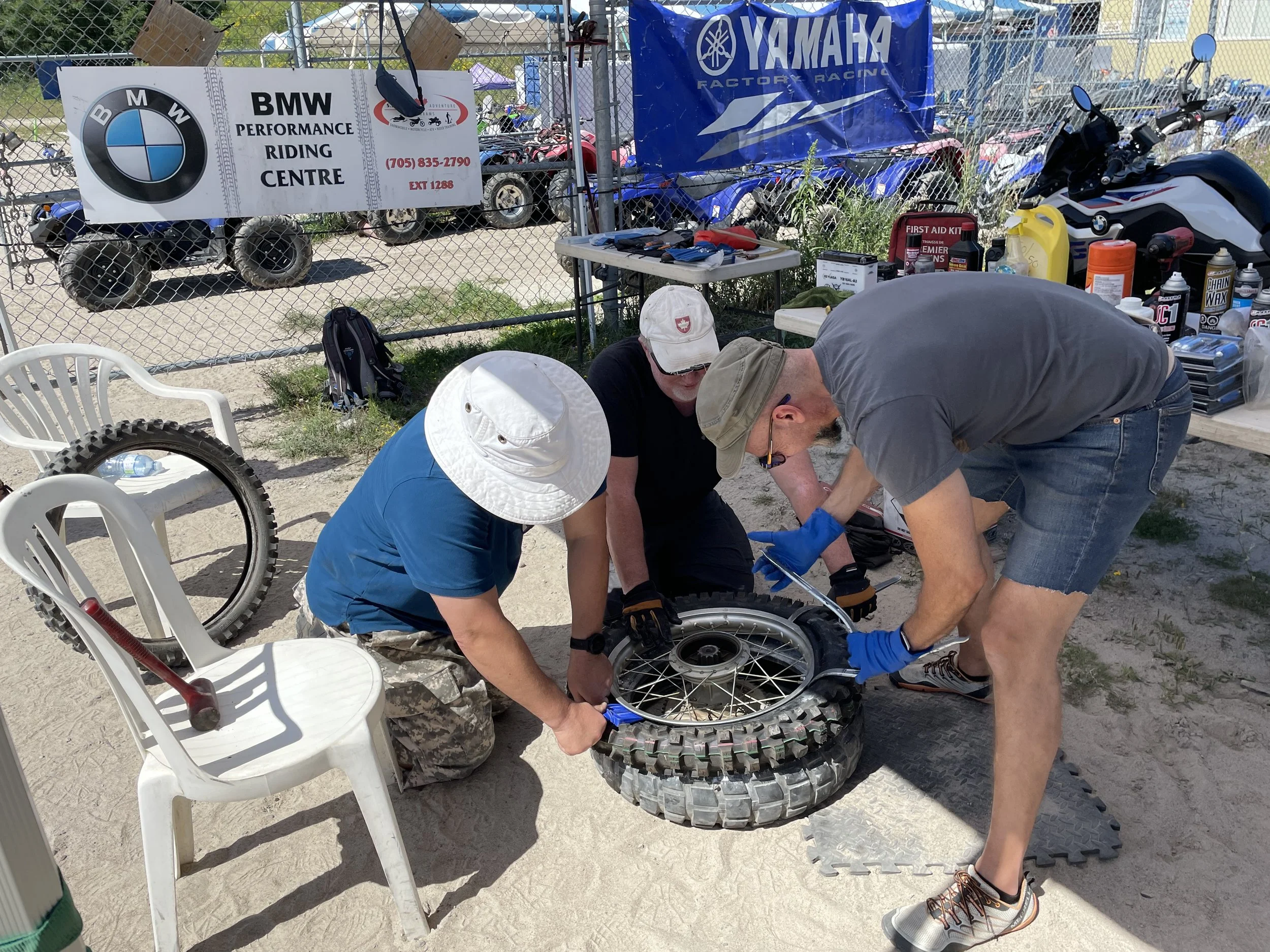

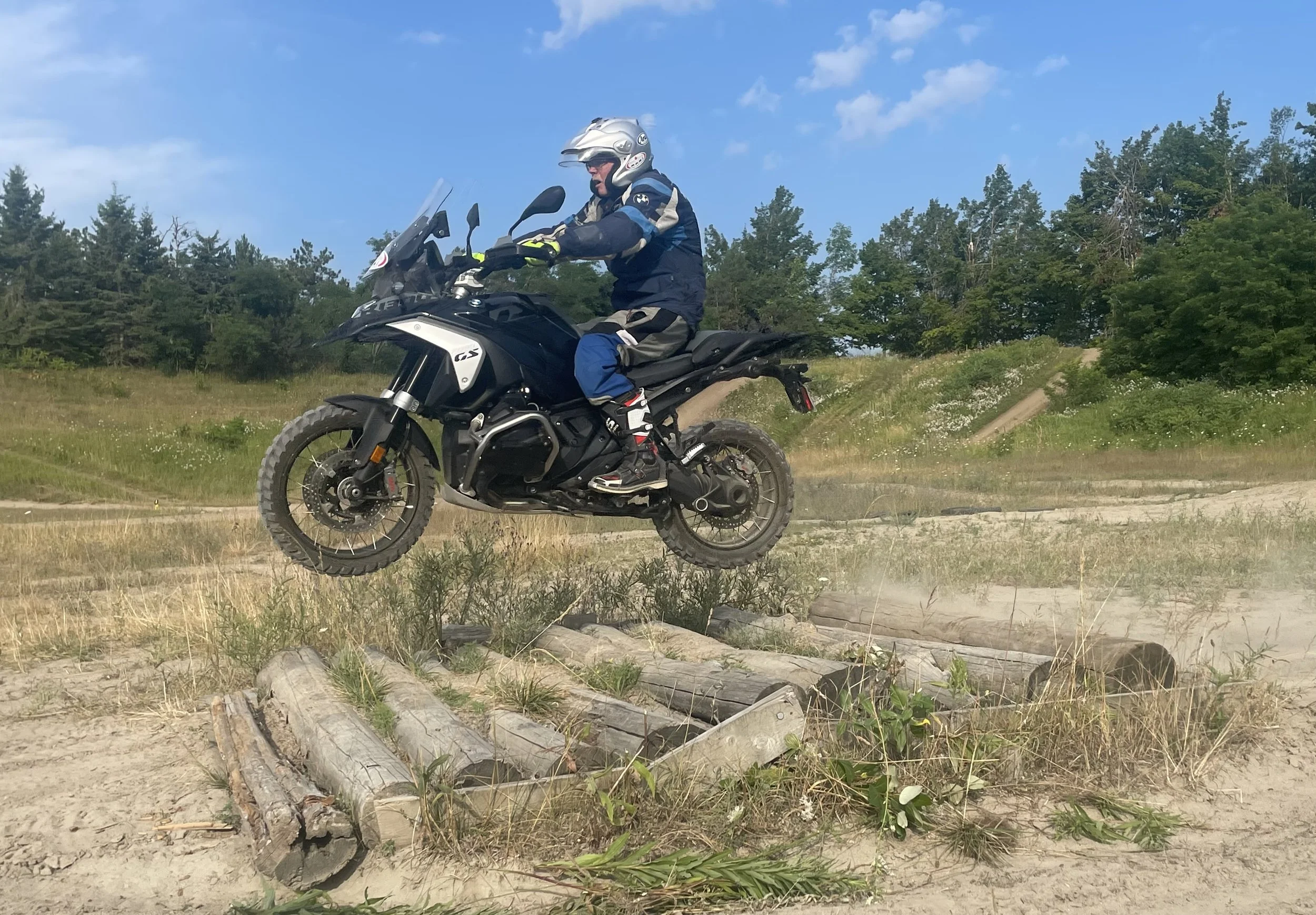







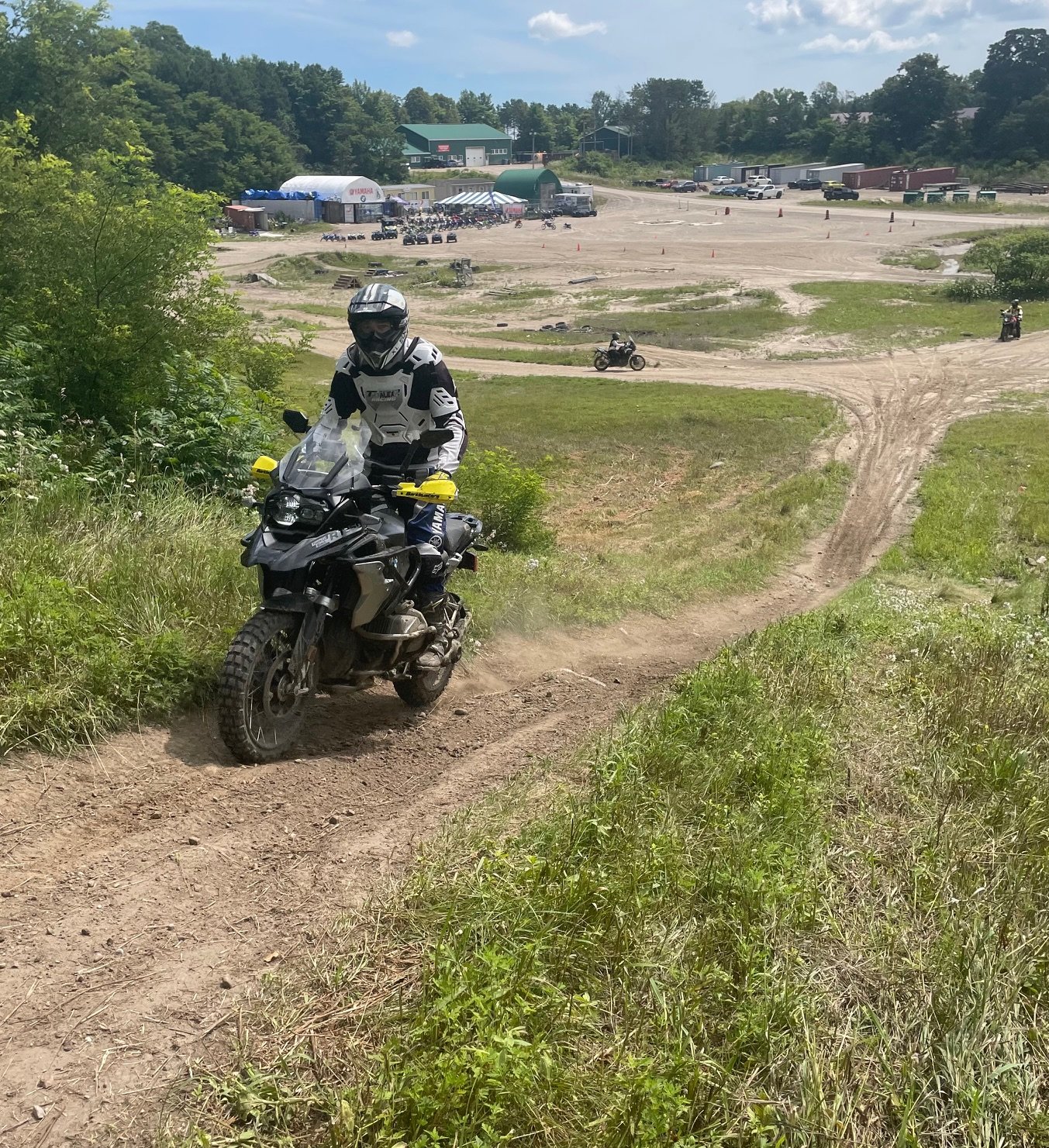
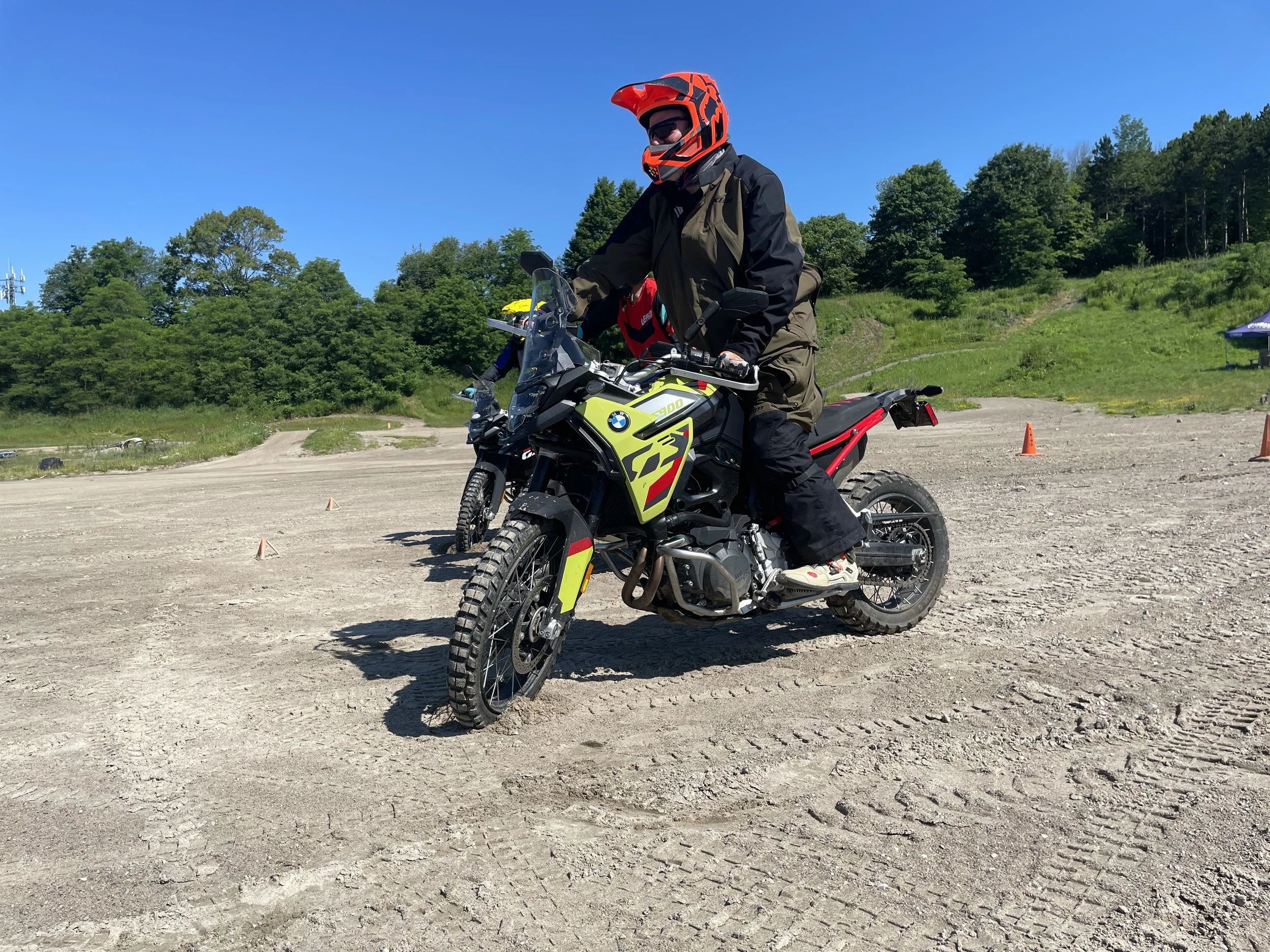




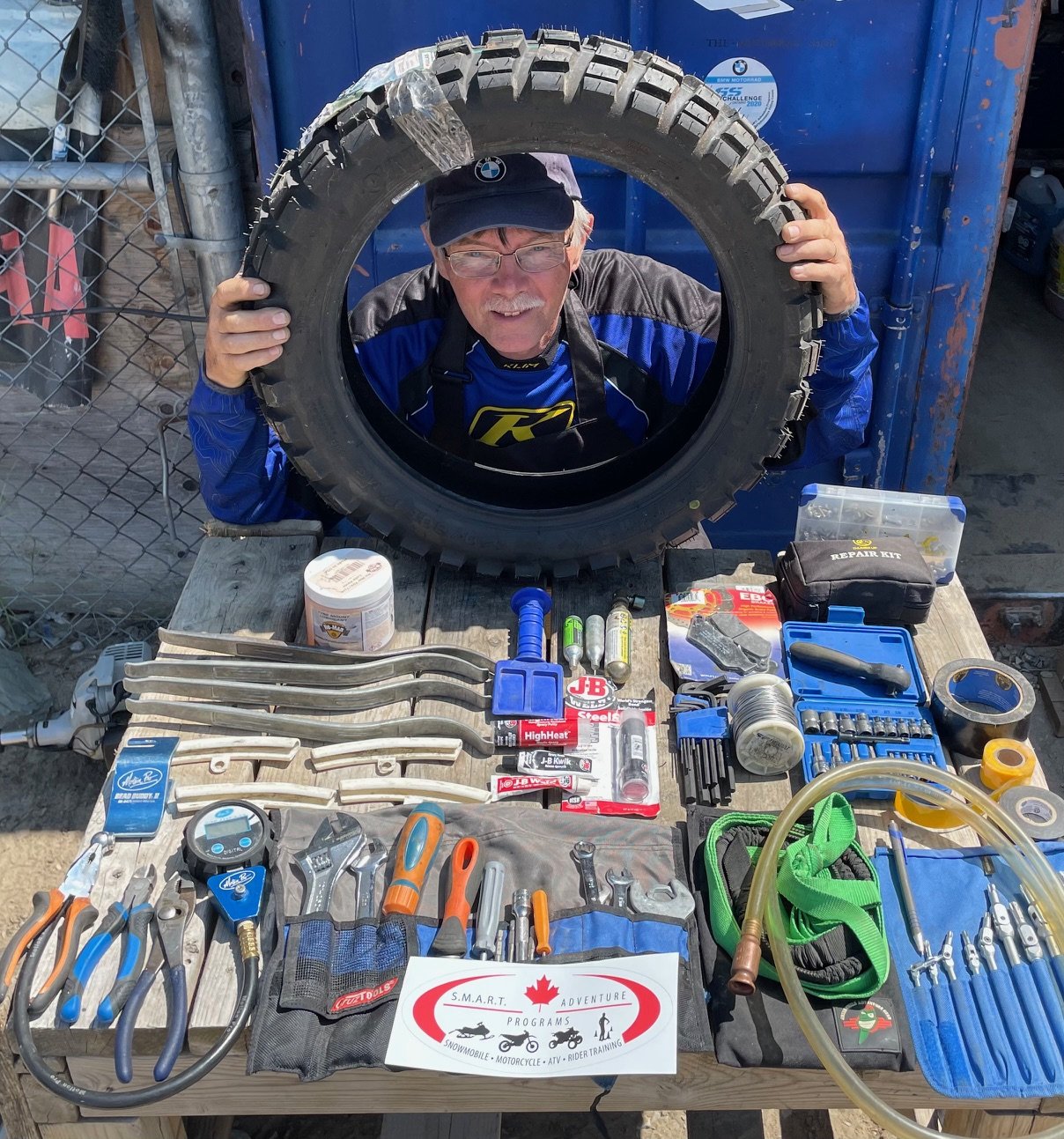

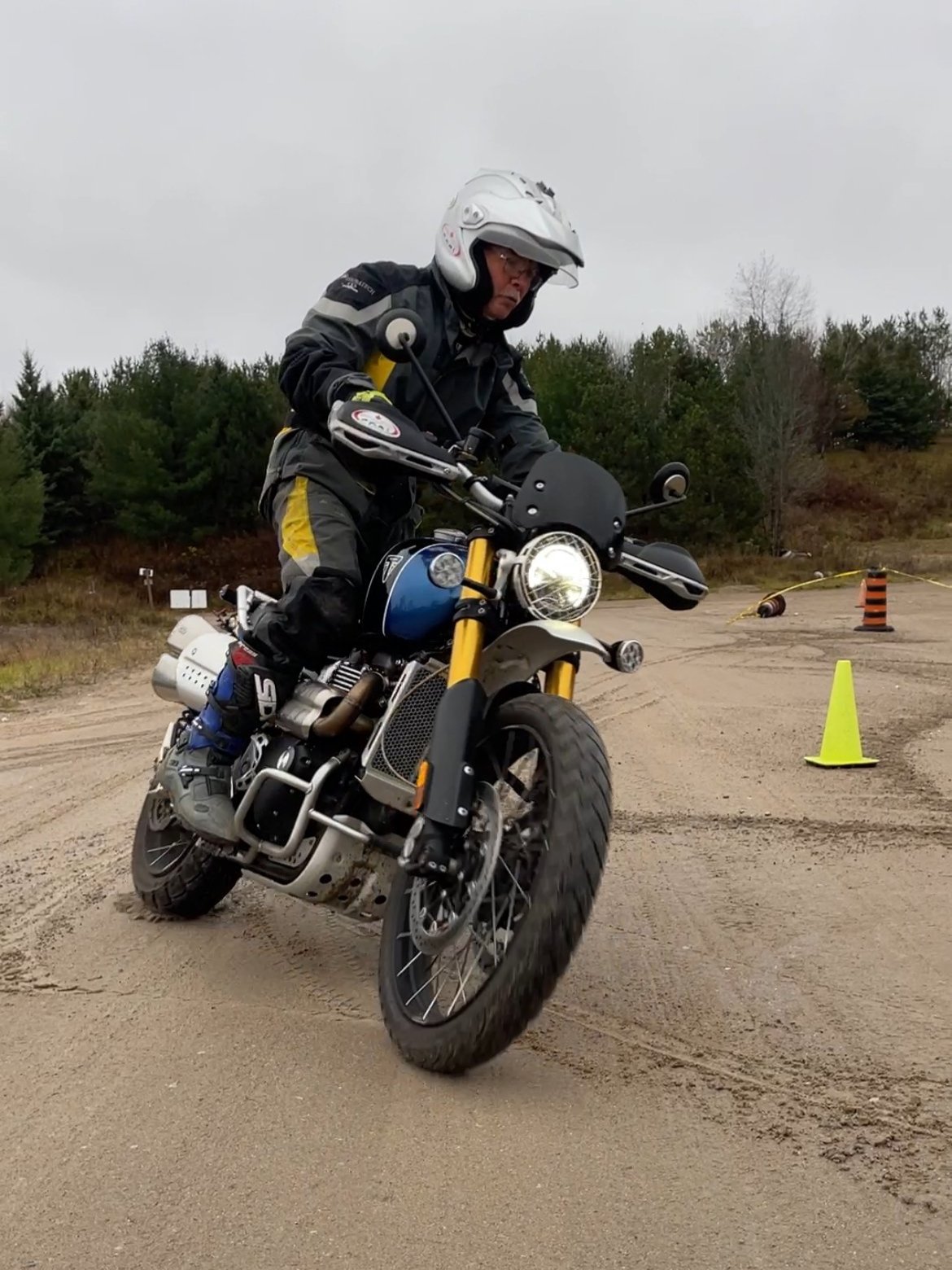

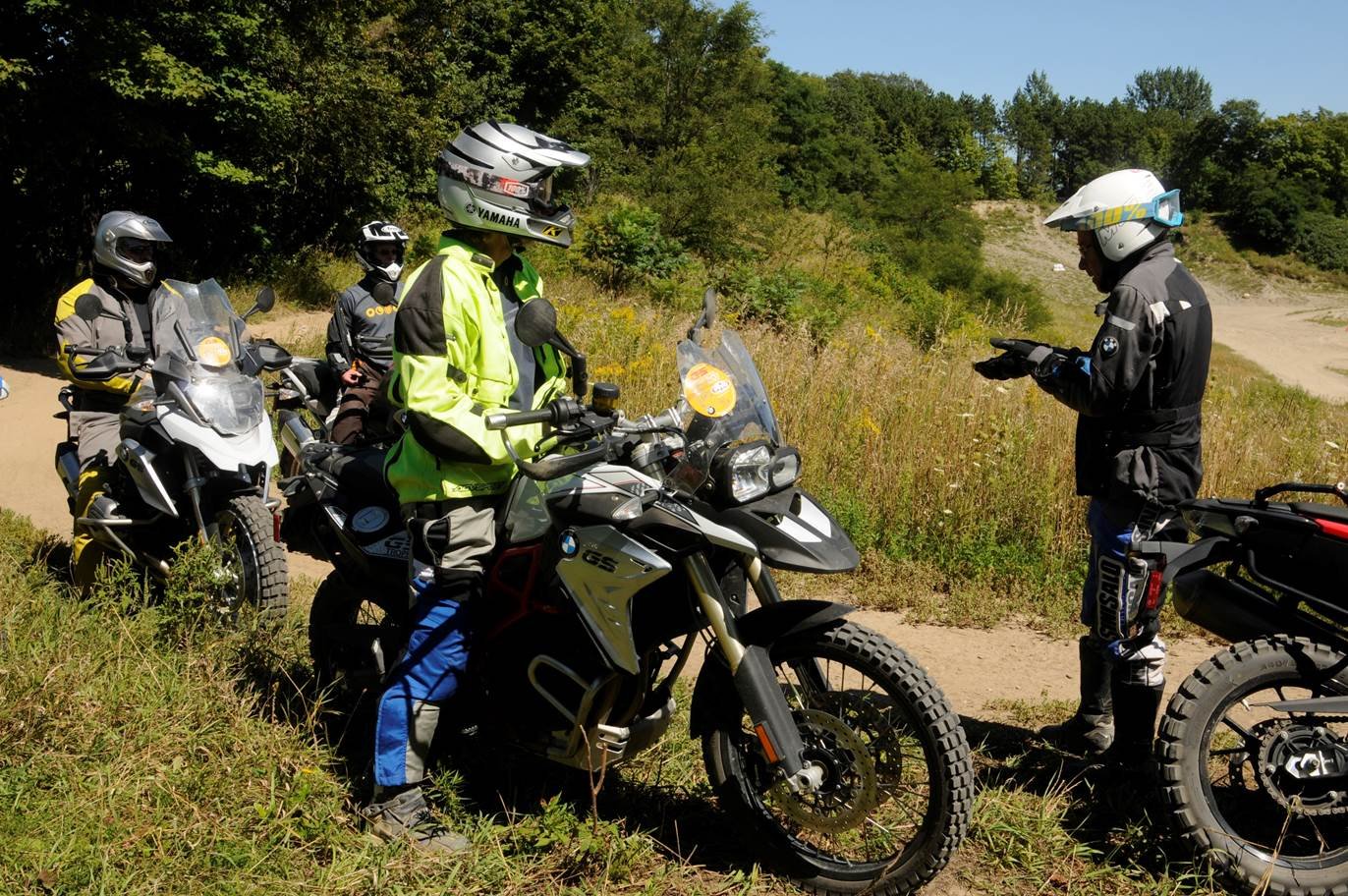
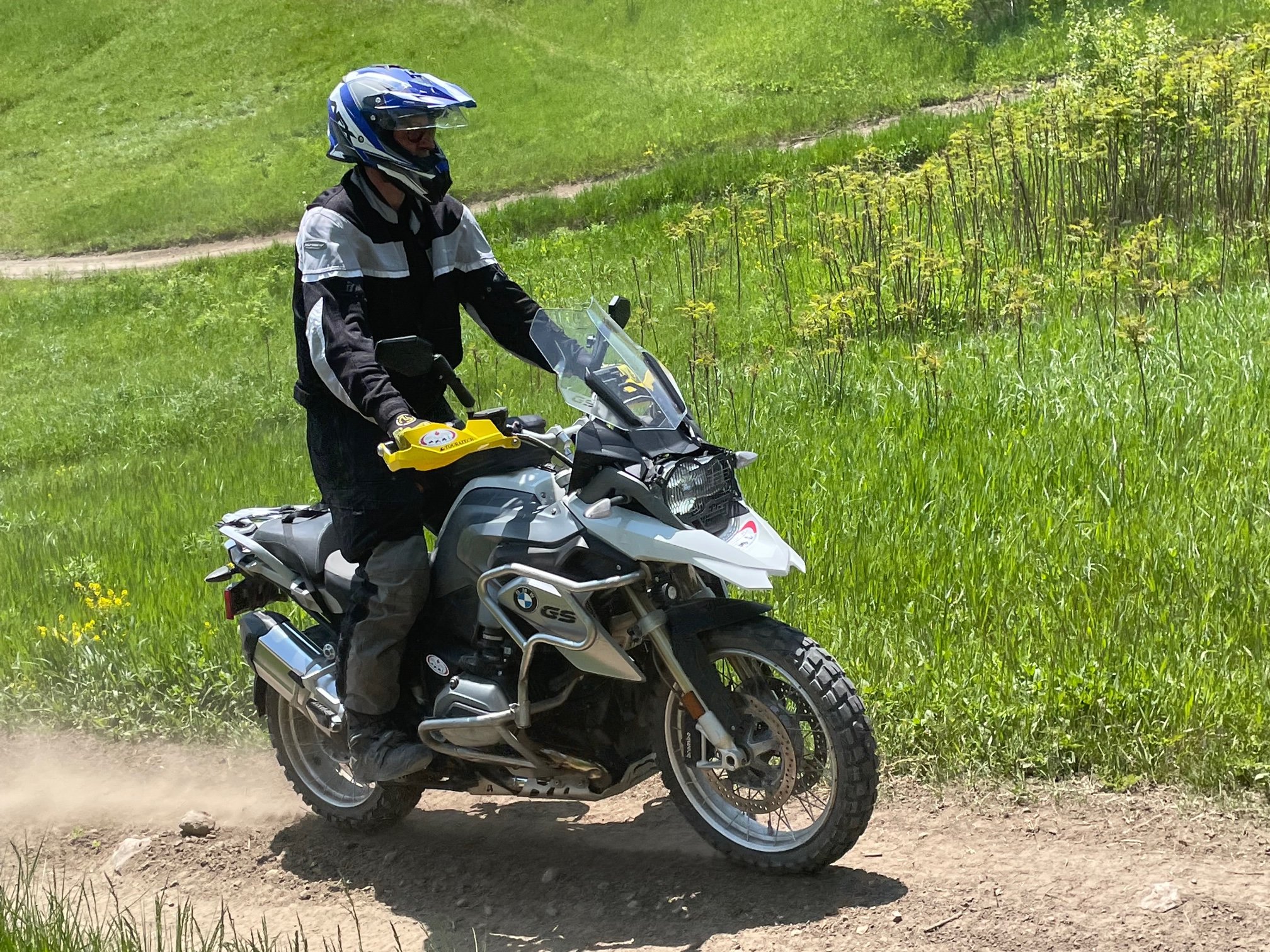
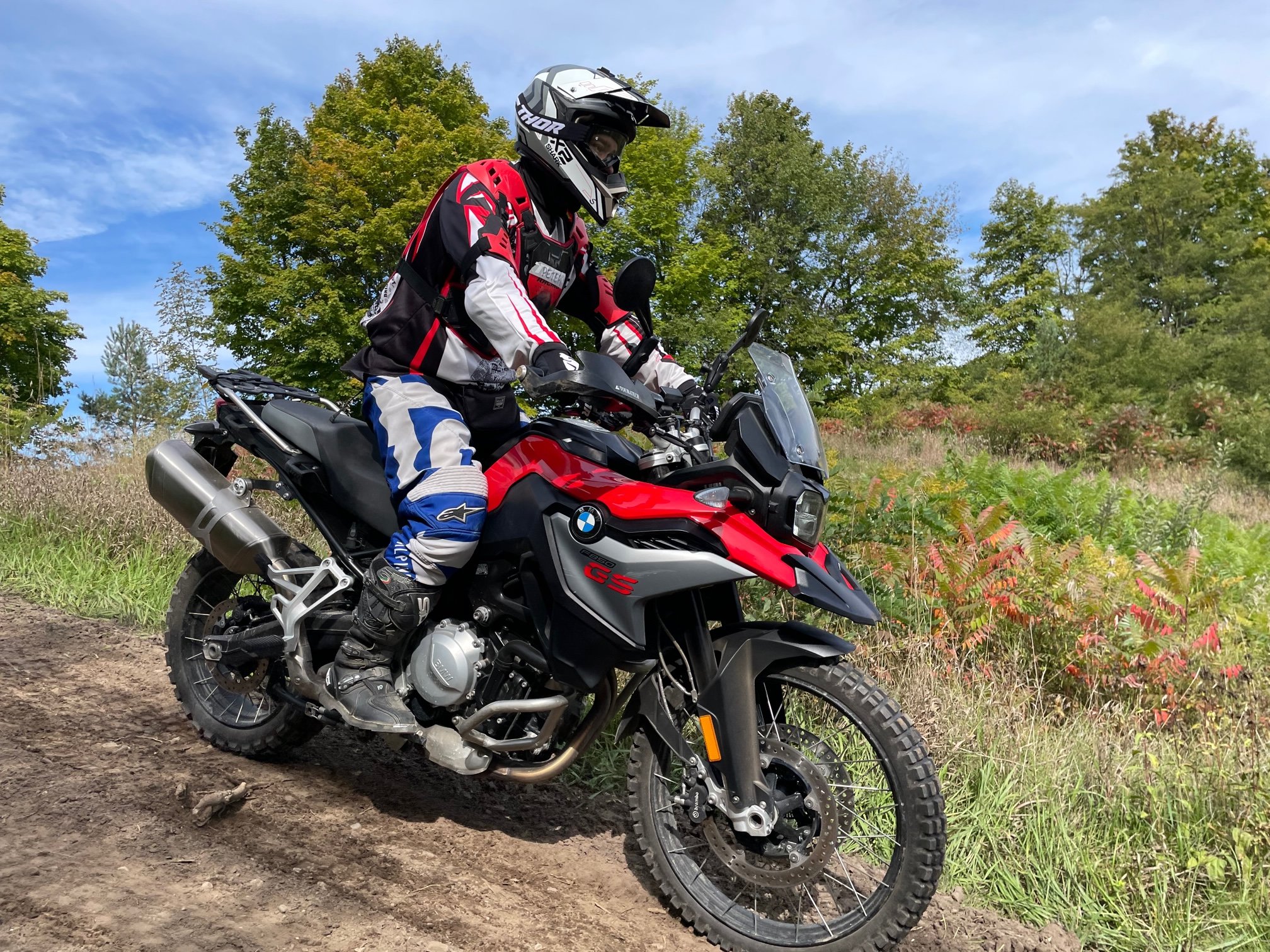
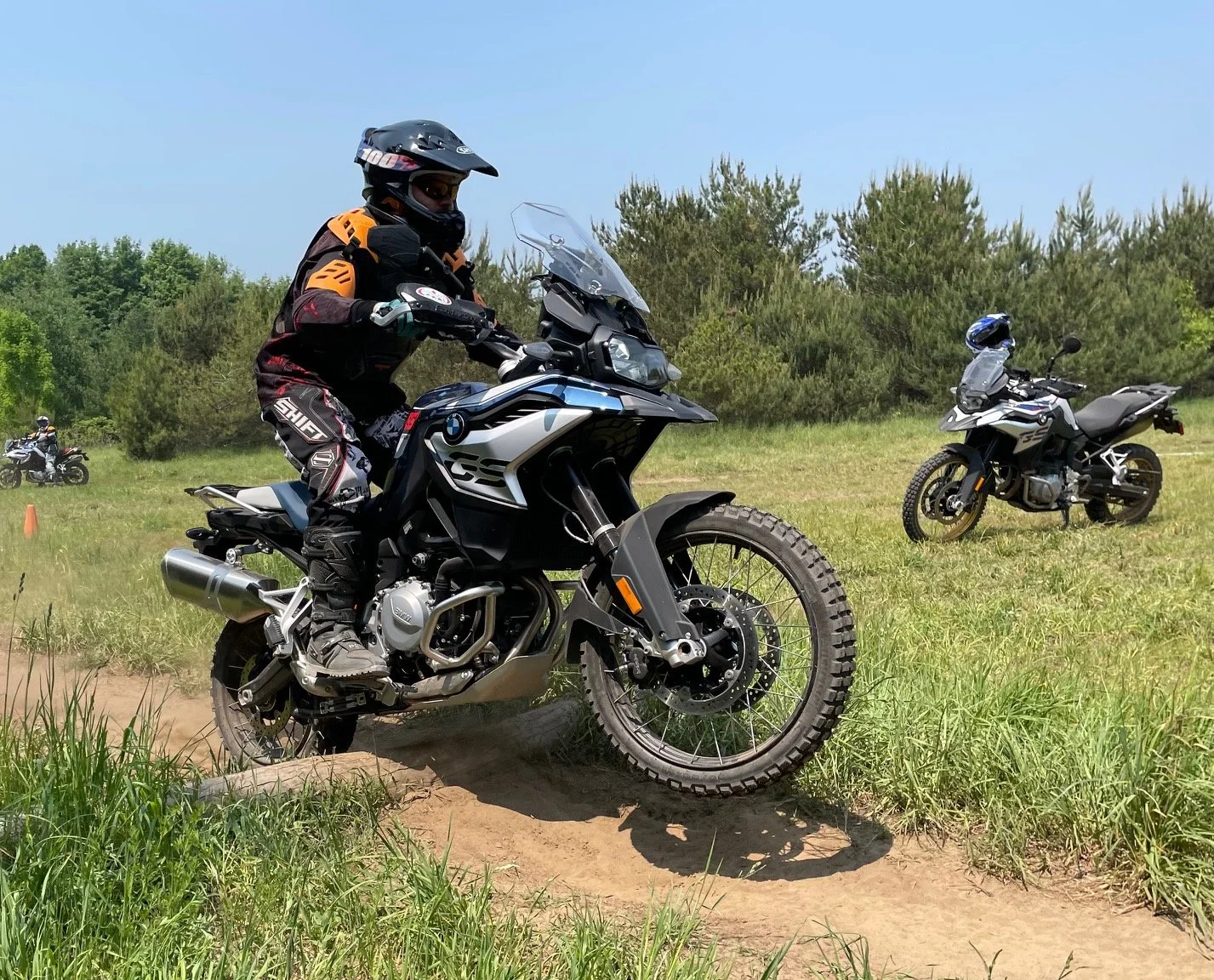



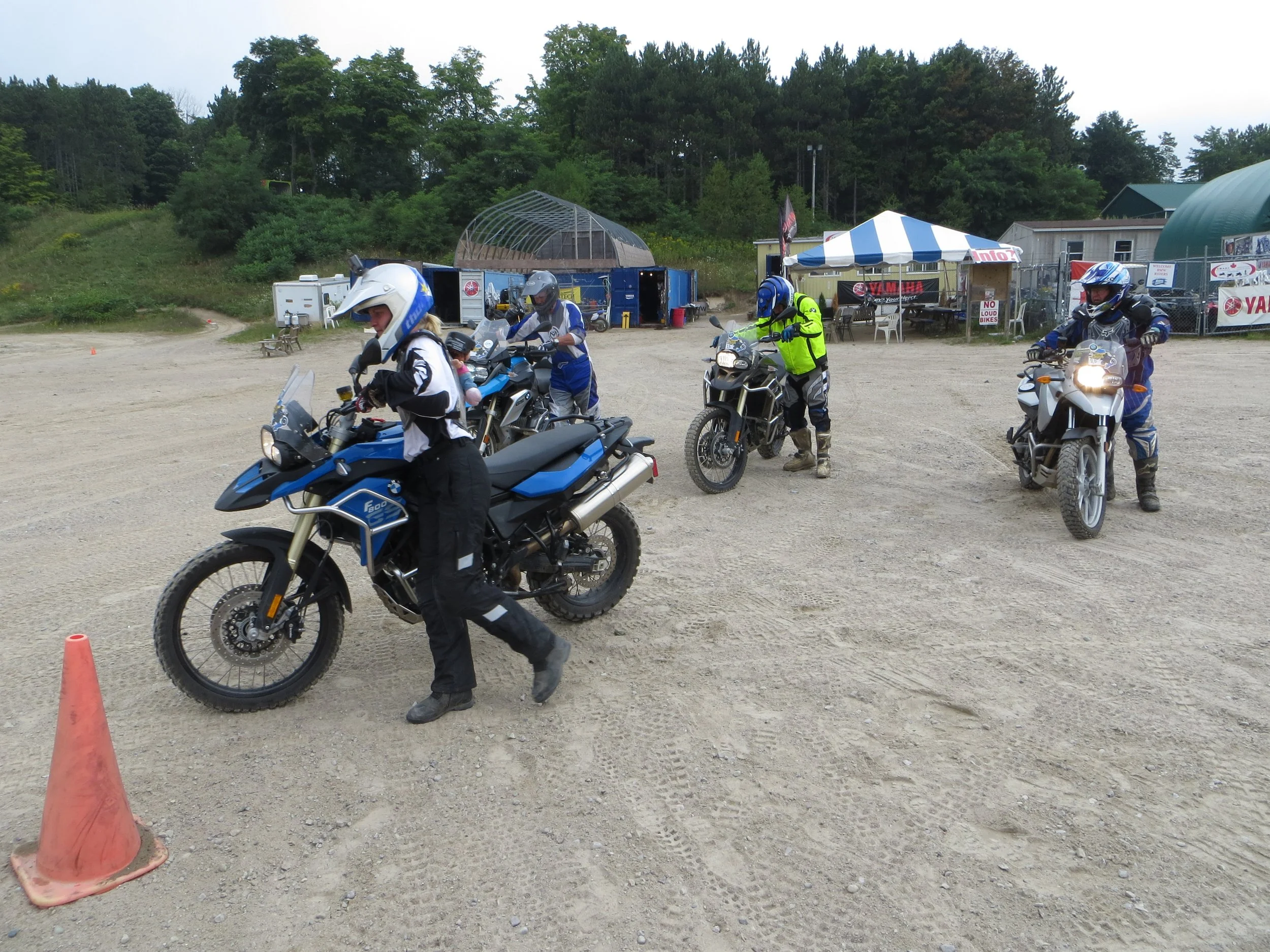






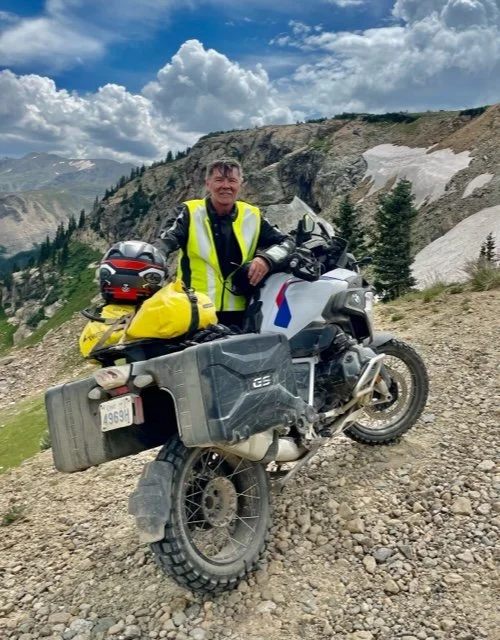


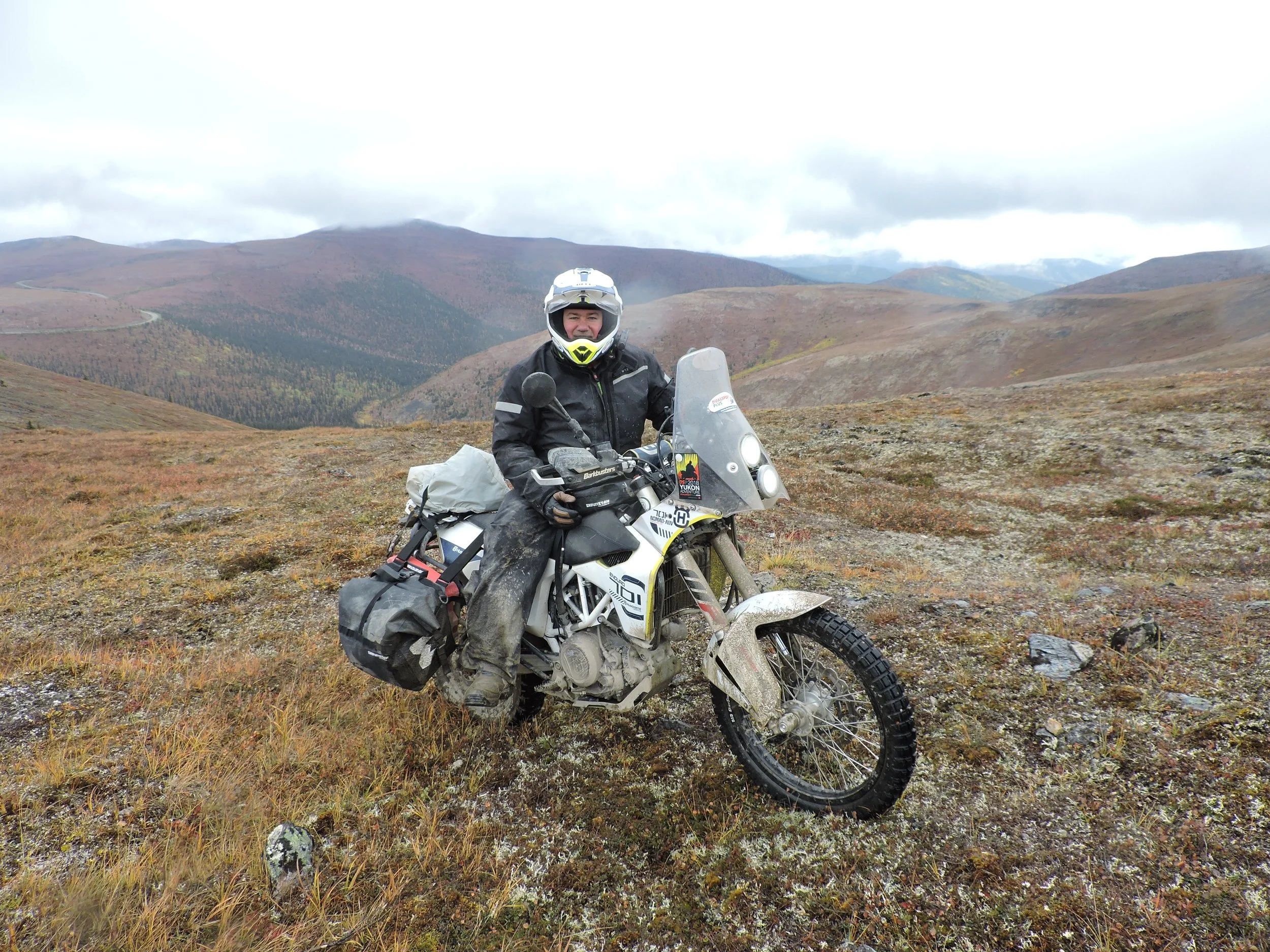

















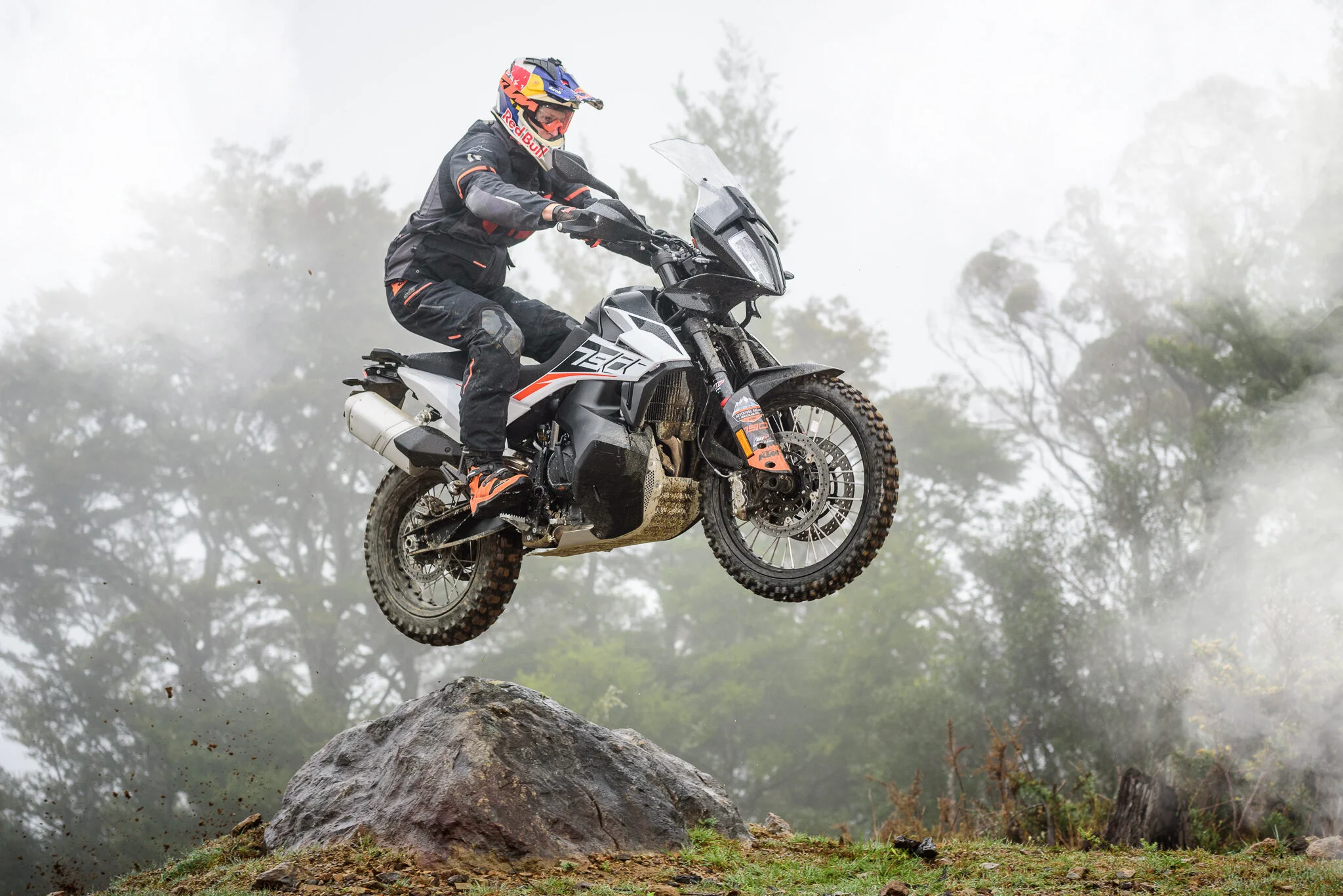





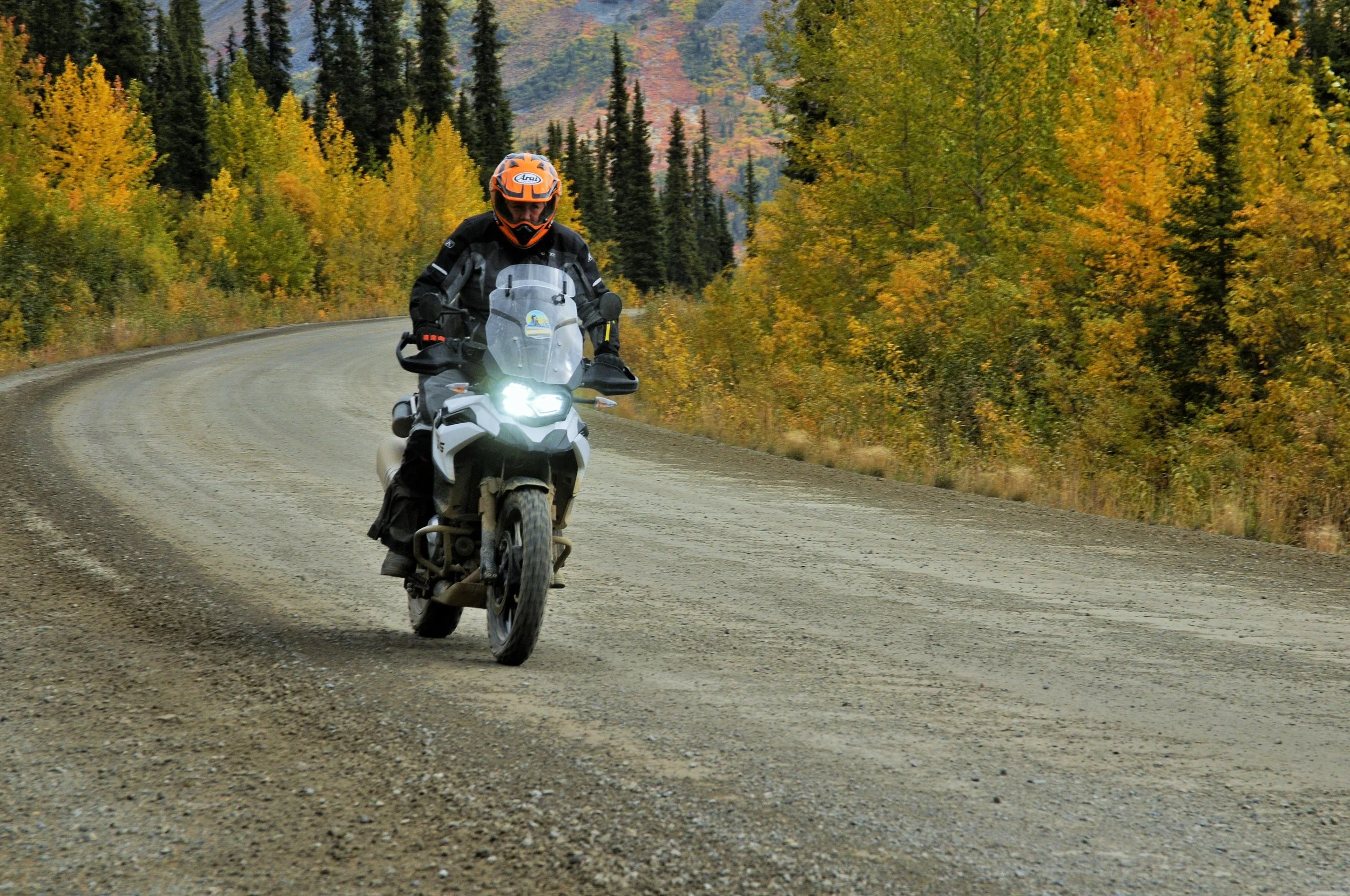




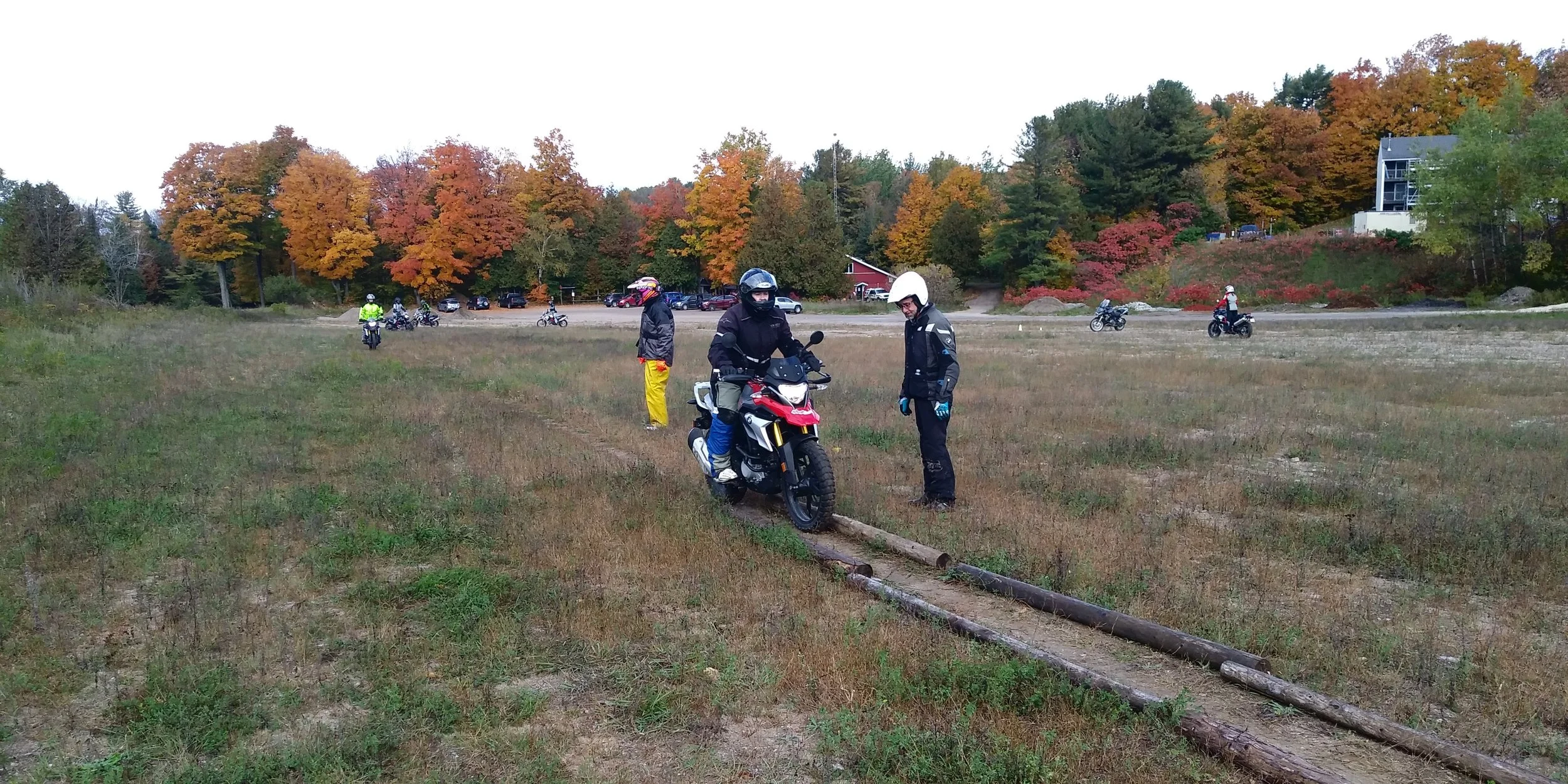








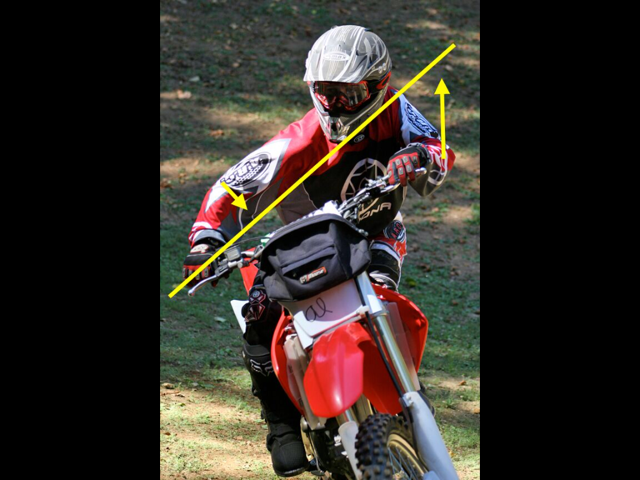
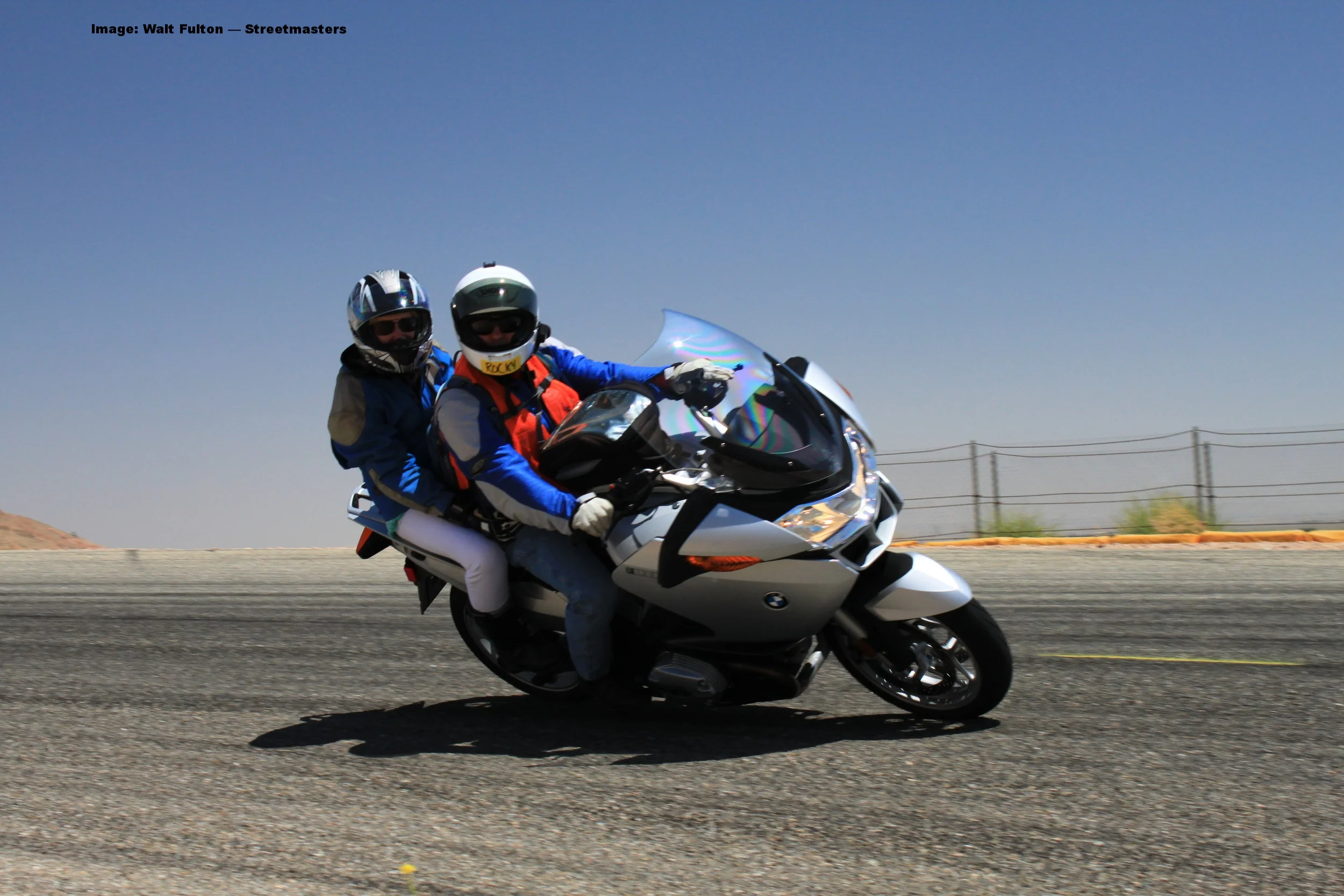




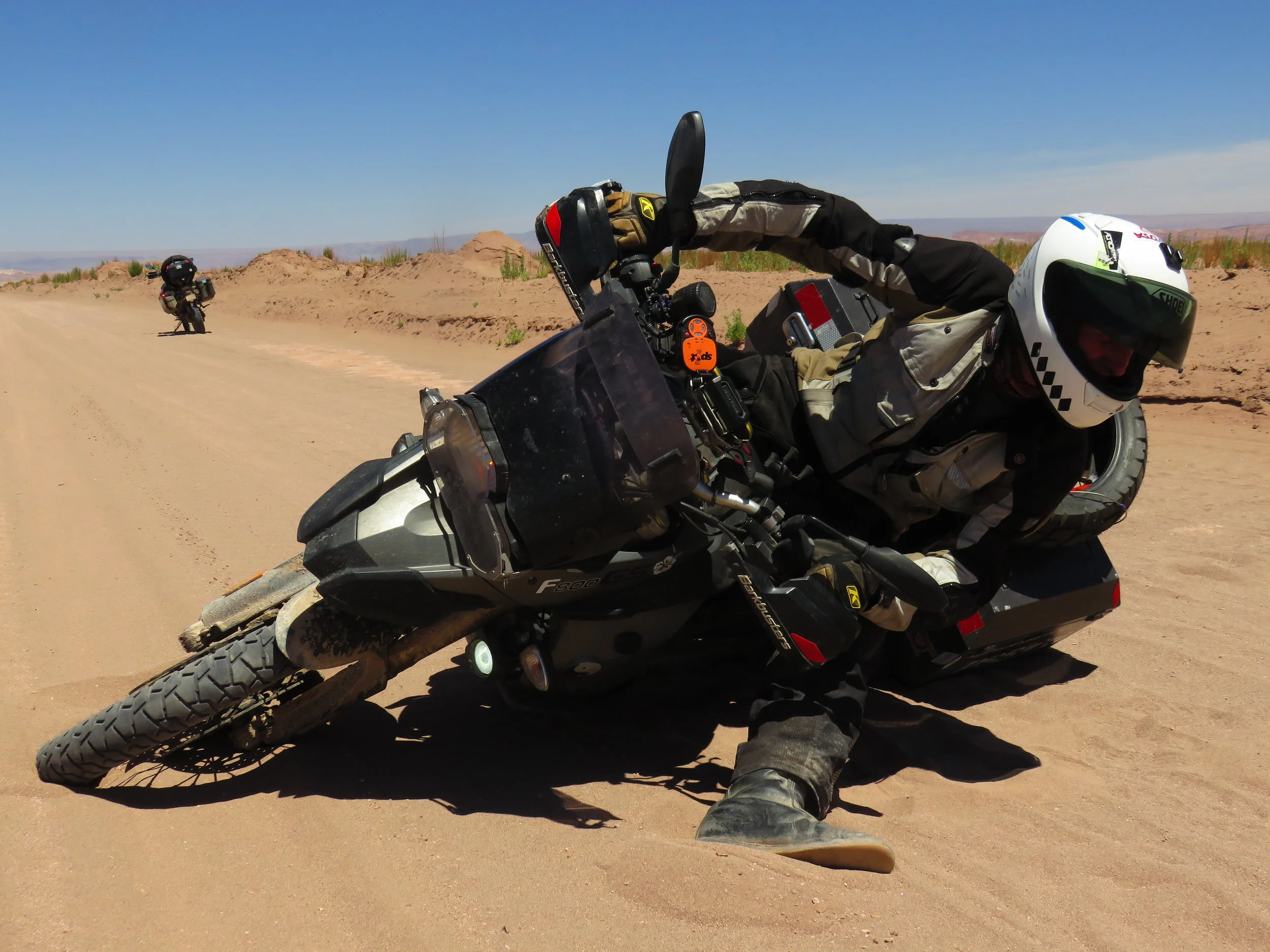

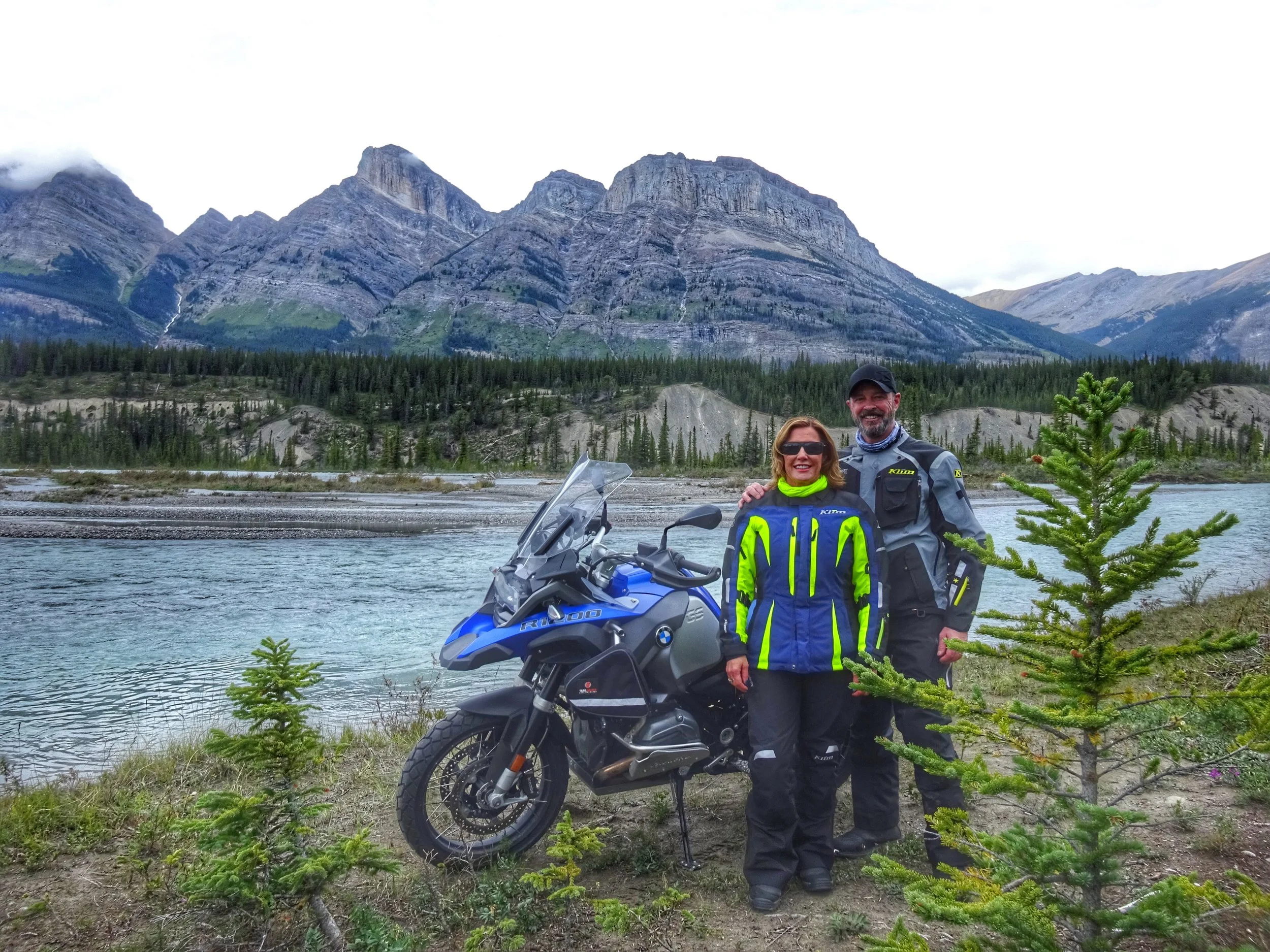
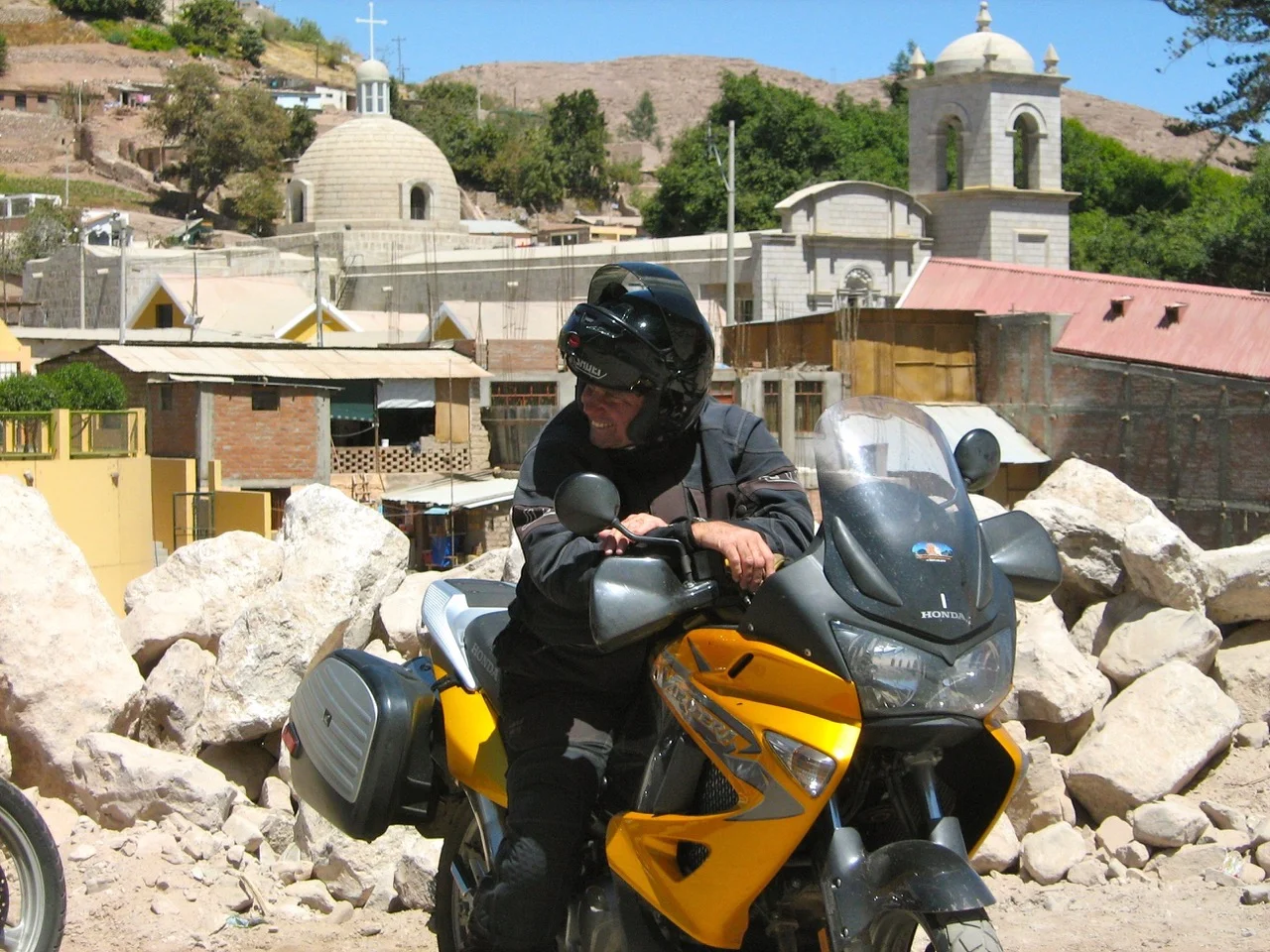

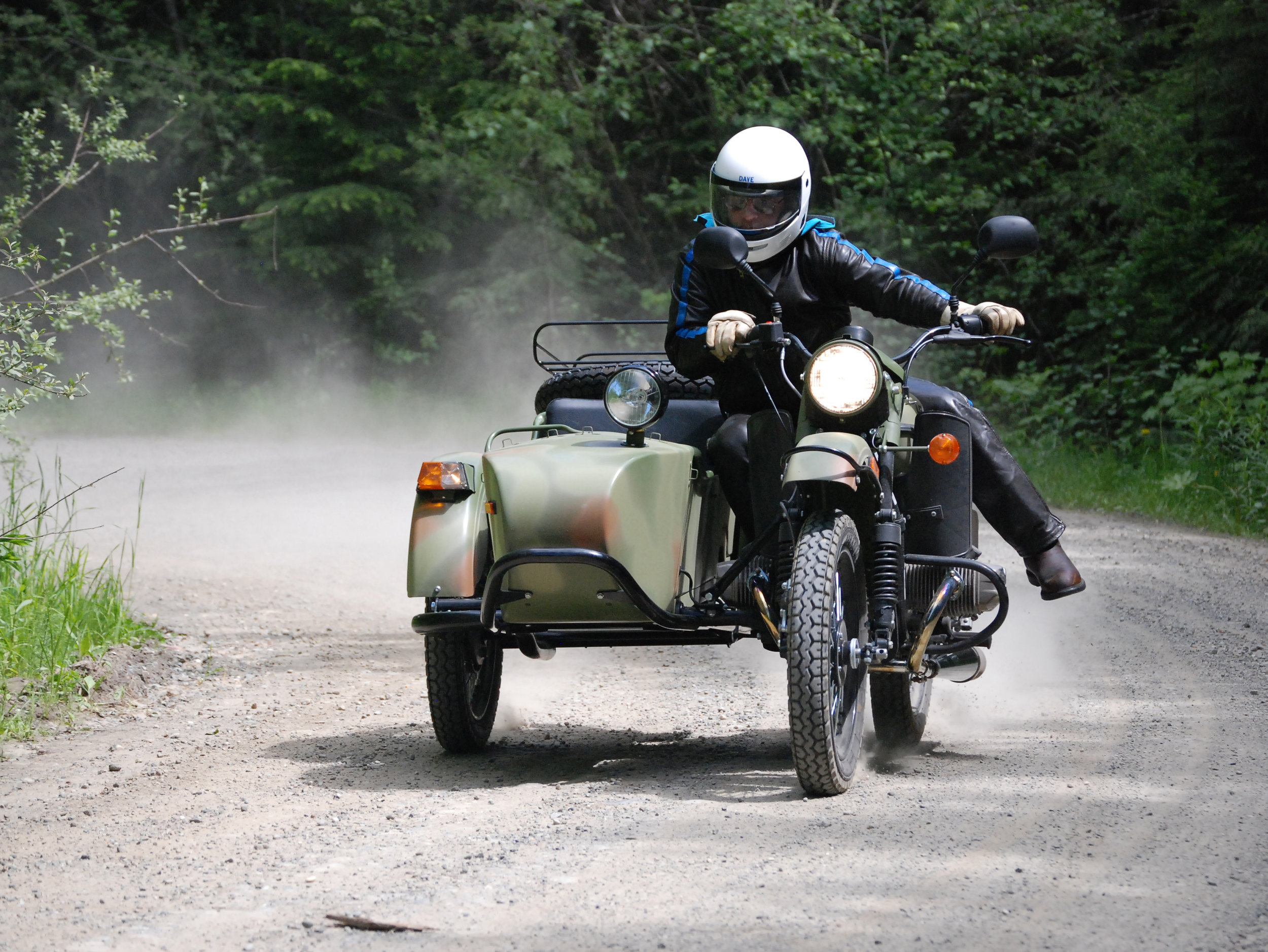






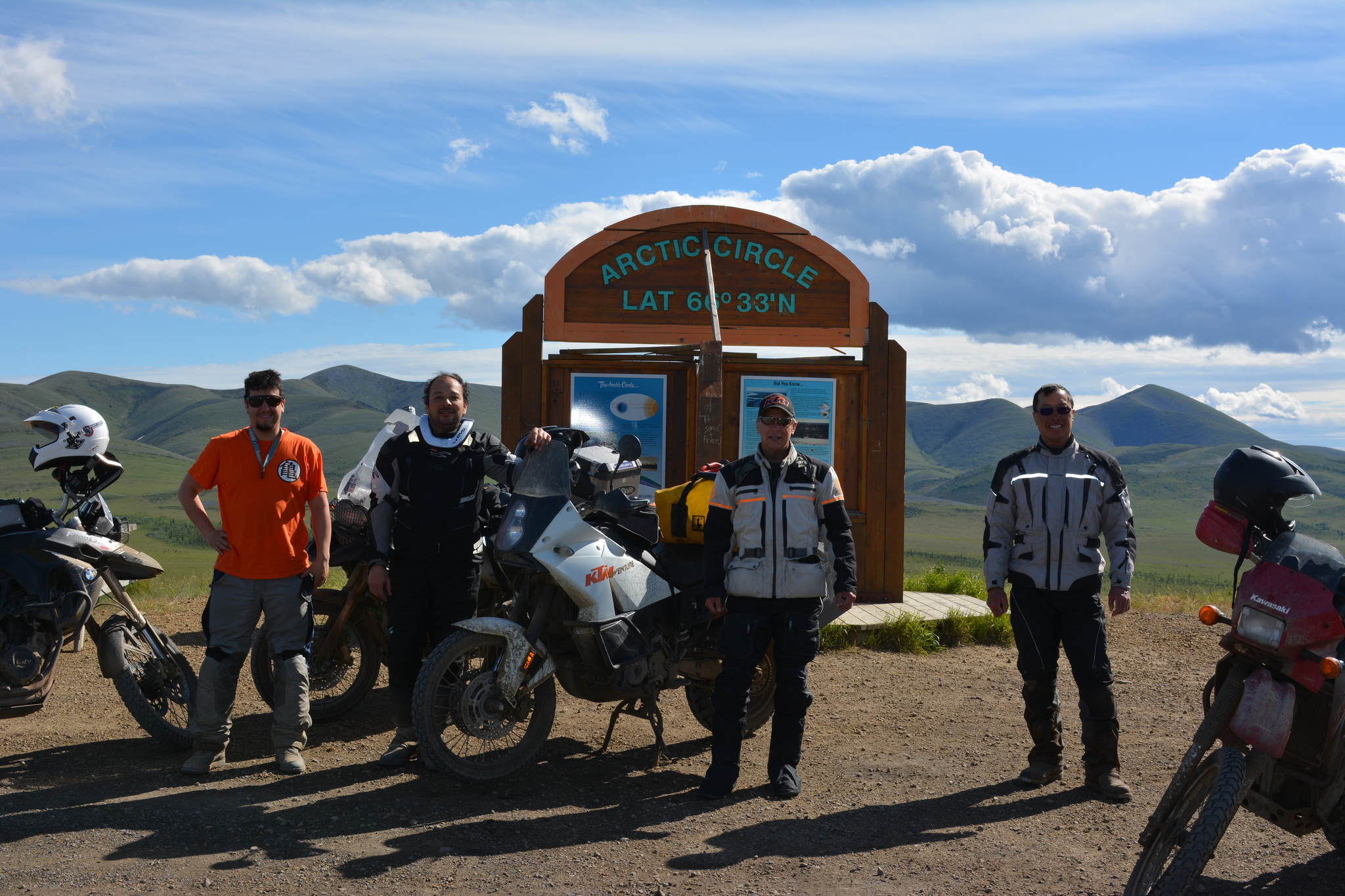


Getting your adventure motorcycle over a log can be a daunting experience, but learning how to do it can open up a whole new world for you. On this episode of Rider Skills we have instructor Chris Birch, world famous for what he does with an adventure bike, teach us how to get our heavy motorcycles over a log in three easy steps and look like a pro while we’re doing it.